The Bahamas are a tropical island paradise located in the Caribbean Sea, home to a variety of stunning birds. From the brightly colored Caribbean flamingo to the rare Bahama woodstar hummingbird, there are many species of birds to be seen in this beautiful destination.
Whether you’re an avid birder or just looking for some beautiful sights, the Bahamas is the perfect place for an unforgettable bird watching experience.
1. Bahama Woodstar
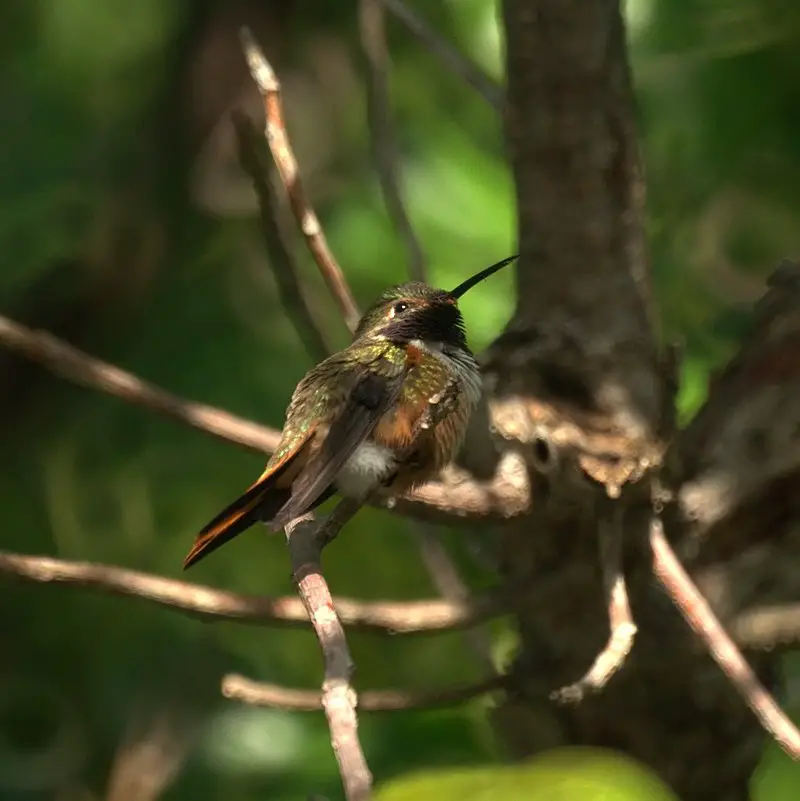
The Bahama woodstar, or ‘hummer’, is a species of hummingbird found in the Lucayan archipelago. It has a distinct sound it makes while feeding and can easily be identified by locals.
Hummingbirds are one of the most abundant avian families around with 338 recognized species.
These birds have an impressive array of colors that range from pinks and purples to greens and blues, depending on the season.
The wingspan for this particular type ranges from 4-5 inches long – making them quite small compared to other bird types.
They feed on nectar from flowers as well as insects which they obtain through their specialized bill shapes specifically adapted for hovering over plants efficiently so they can extract pollen grains quickly without expending too much energy during flight.
Furthermore, these tiny creatures also possess incredible migratory abilities; some travel up to 6500 miles round trip each year.Scientific classification:
| Kingdom | Animalia |
| Phylum | Chordata |
| Class | Aves |
| Order | Apodiformes |
| Family | Trochilidae |
| Genus | Nesophlox |
| Species | N. evelynae |
Also Featured In: Hummingbirds Live around Florida, Grand Bahama Birds
2. Bahama Yellowthroat
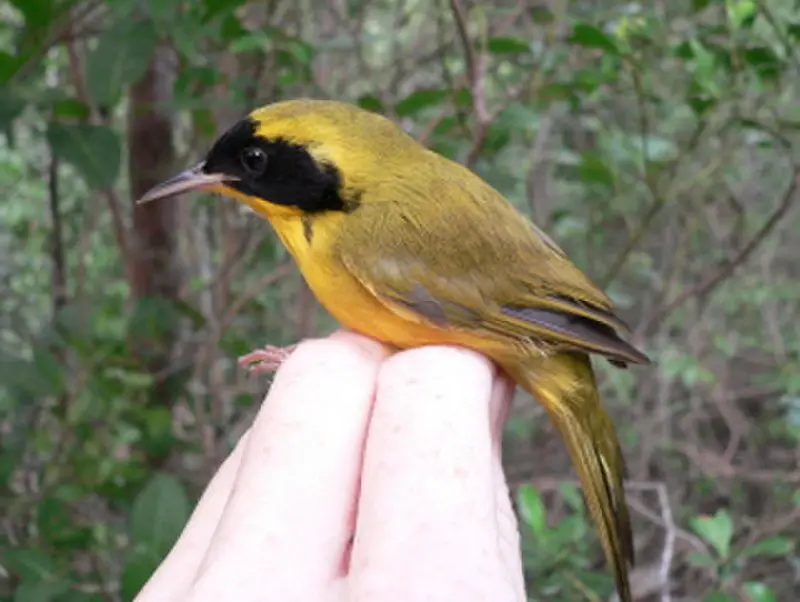
The Bahama yellowthroat is a small New World warbler, endemic to the Bahamas. It has an impressive large bill and measures 15 cm in length.
Male of the nominate race (Geothlypis rostrata rostrata) have olive-green upperparts with white underparts and bright yellow throat patch that extends slightly onto side of breast.
Females are similar but duller overall. There are three subspecies recognized; Geothlypis rostrata maynardi from Abaco Islands, G. r bracensis from Grand Bahama Island & Cay Sal Bank, G .r insularum from Great Inagua island respectively .
They inhabit dense scrubby thickets near water bodies such as swamps or marshes where they forage actively by gleaning insects off vegetation and flycatching low over water surface during breeding season.
Despite its range being limited it is common within its habitat throughout most islands except Grand Bahama Island & Cay sal bank which show some decline due to human activities like development projects & agriculture expansion plansScientific classification:
| Kingdom | Animalia |
| Phylum | Chordata |
| Class | Aves |
| Order | Passeriformes |
| Family | Parulidae |
| Genus | Geothlypis |
| Species | G. rostrata |
Also Featured In: Great Abaco Island Birds,
3. Thick-Billed Vireo
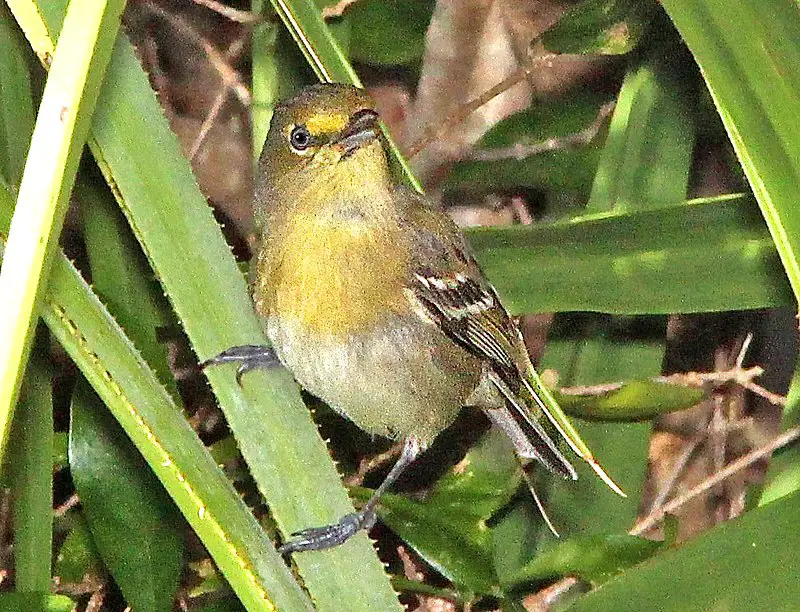
The Thick-billed Vireo is a small songbird native to the West Indies, found in places such as The Bahamas, Turks and Caicos Islands, Cayman Islands and on cays off Cuba.
Occasionally it has been spotted as far away as south Florida. It is classified into one species with two subspecies: Vireo crassirostris and V.c. approximans of Providencia Island which may be considered its own species by some authorities.
This bird prefers dry forests or mangrove swamps for nesting where there are plenty of trees available for habitat protection from predators like hawks or owls.
Its diet consists mainly of insects but also includes fruits when they’re in season.
In order to avoid competition with other birds during breeding times these vireos migrate northward each year between April and June returning again around October before winter sets in making them an interesting sight if you happen to spot one.Scientific classification:
| Kingdom | Animalia |
| Phylum | Chordata |
| Class | Aves |
| Order | Passeriformes |
| Family | Vireonidae |
| Genus | Vireo |
| Species | V. crassirostris |
4. Bahama Swallow
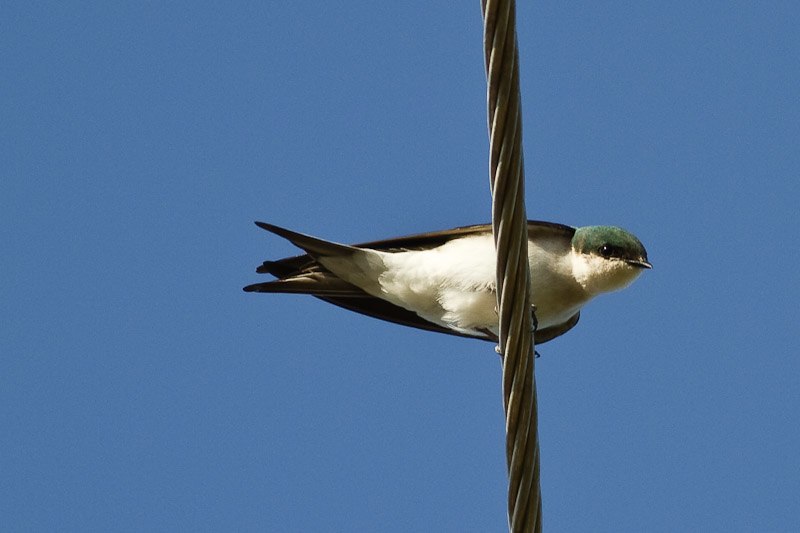
The Bahama swallow is a unique species of bird found only in the Bahamas. It has an emerald green head and back, blue wings, black tail and wingtips, and a white chin and belly.
This beautiful creature can be seen breeding mainly in pineyards on four islands – Andros, Grand Bahama, Abaco and New Providence.
The population on New Providence alone is estimated to number fewer than 250 individuals.
These swallows are generally solitary birds that feed during the day on insects such as flies or beetles.
They roost at night in shrubs or trees but rarely use artificial dwellings like barns or houses for shelter from predators.
Conservation efforts must be made to ensure this endemic species continues to thrive within its natural habitat range so future generations may appreciate its distinctive beauty too.Scientific classification:
| Kingdom | Animalia |
| Phylum | Chordata |
| Class | Aves |
| Order | Passeriformes |
| Family | Hirundinidae |
| Genus | Tachycineta |
| Species | T. cyaneoviridis |
Also Featured In: Common Birds of Turks and Caicos Islands,
5. Cuban Emerald
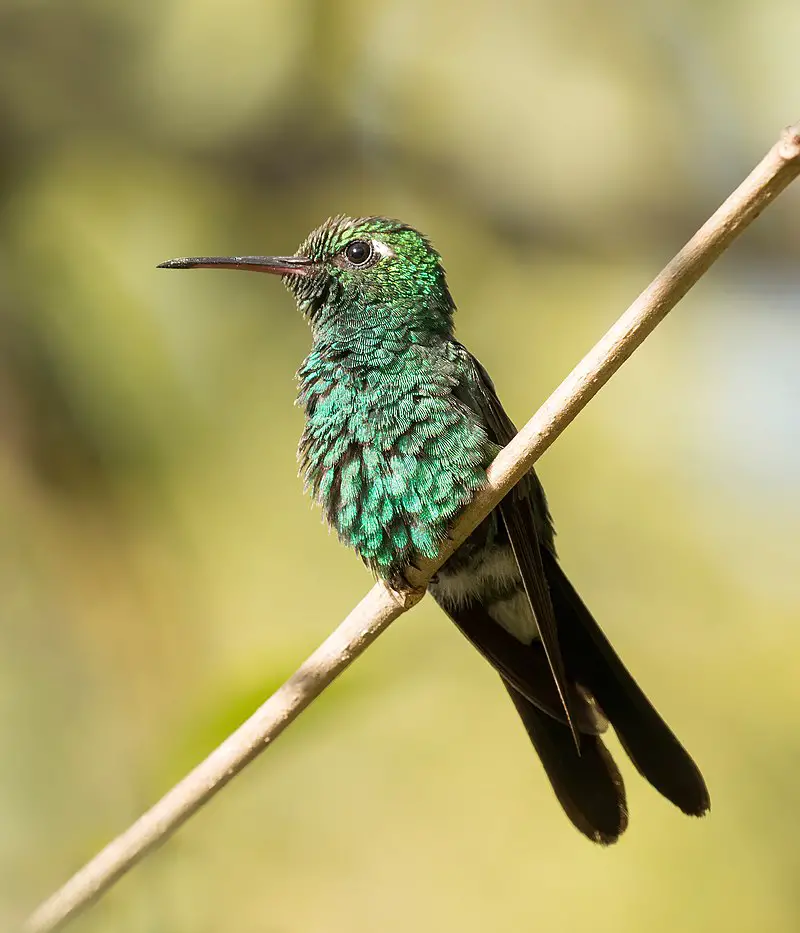
The Cuban Emerald is a species of hummingbird found in the Bahamas and Cuba. It belongs to the Trochilini tribe, which are known as ’emeralds’.
This bird was formerly placed in the genus Chlorostilbon but recent studies have shown that it actually belonged with other emeralds.
The body of this small bird is predominantly green-colored with an iridescent blue throat patch on its chin and some purple or bronze feathers towards its tail end.
Its diet consists mainly of nectar from various flowers, although insects also form part of their daily sustenance.
They use their long curved beaks to reach deep into tubular flowers for nectar, while hovering mid-air like tiny helicopters.
With no natural predators due to their quick maneuverability and powerful wings; these birds can fly up to speeds over 50 km/h.Scientific classification:
| Kingdom | Animalia |
| Phylum | Chordata |
| Class | Aves |
| Order | Apodiformes |
| Family | Trochilidae |
| Genus | Riccordia |
| Species | R. ricordii |
6. Cuban Amazon
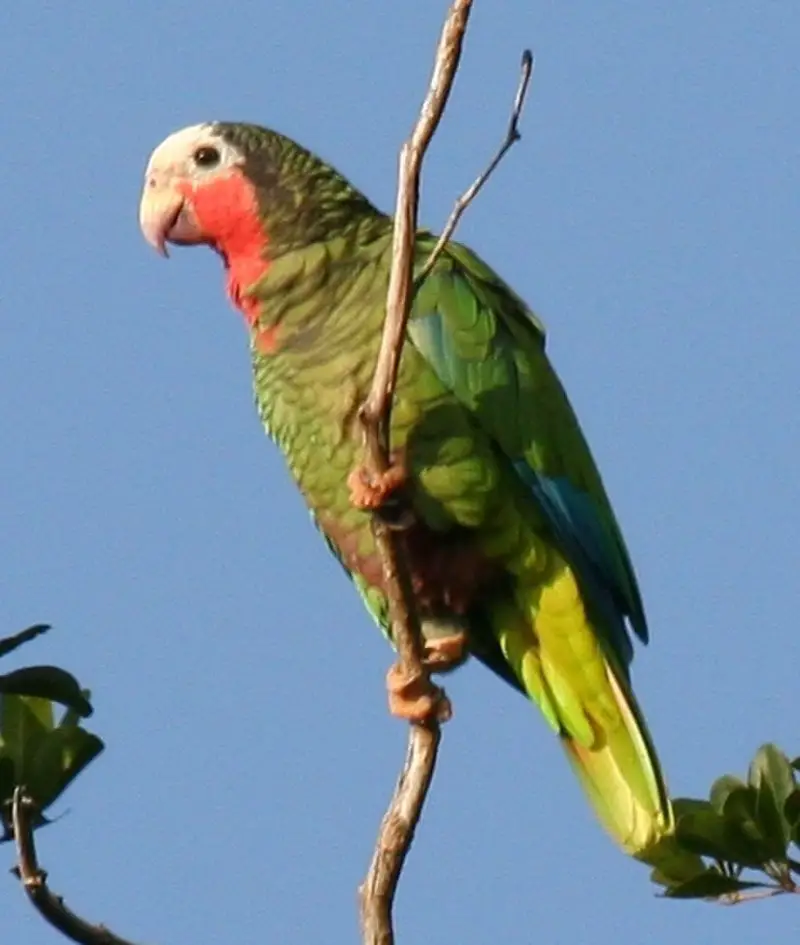
The Cuban amazon is an attractive medium-sized green parrot native to Cuba, the Bahamas and Cayman Islands in the Caribbean.
These birds live mainly in woodlands and dry forests but can also be found as escaped pets in Puerto Rico.
They are easily distinguished by their bright green feathers with white on the tips of their wings, yellow foreheads, red lower mandibles and a hint of rose around their throats.
The Cuban amazon has been known for its colorful beauty since long ago; Columbus himself described them when he first arrived at Cuba.
Unfortunately this species is now endangered due to illegal pet trade so it’s essential that we protect these wonderful birds before they disappear forever from our shores.Scientific classification:
| Kingdom | Animalia |
| Phylum | Chordata |
| Class | Aves |
| Order | Psittaciformes |
| Family | Psittacidae |
| Genus | Amazona |
| Species | A. leucocephala |
7. New World Quail
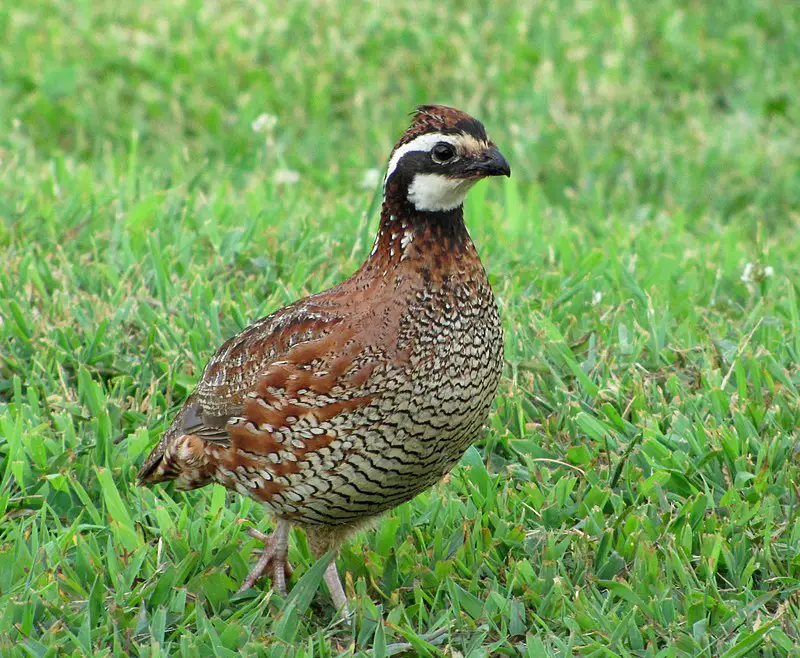
New World quail are small birds found in the Americas, from Canada to Brazil. They belong to their own family, Odontophoridae, and have similar appearance and habits as Old World quail which belong to a different family.
New World Quails come in various species such as California Quail and Bobwhite Quail.
These birds have adapted well to human presence due to availability of food resources like agricultural crops.
They also live close together where they form large flocks for safety against predators like foxes or hawks.
The males usually sport colorful feathers during mating season that helps them attract female mates while providing an amazing sight for us viewers.Scientific classification:
| Kingdom | Animalia |
| Phylum | Chordata |
| Class | Aves |
| Order | Galliformes |
| Superfamily | Phasianoidea |
| Family | Odontophoridae Gould, 1844 |
8. Olive-Capped Warbler
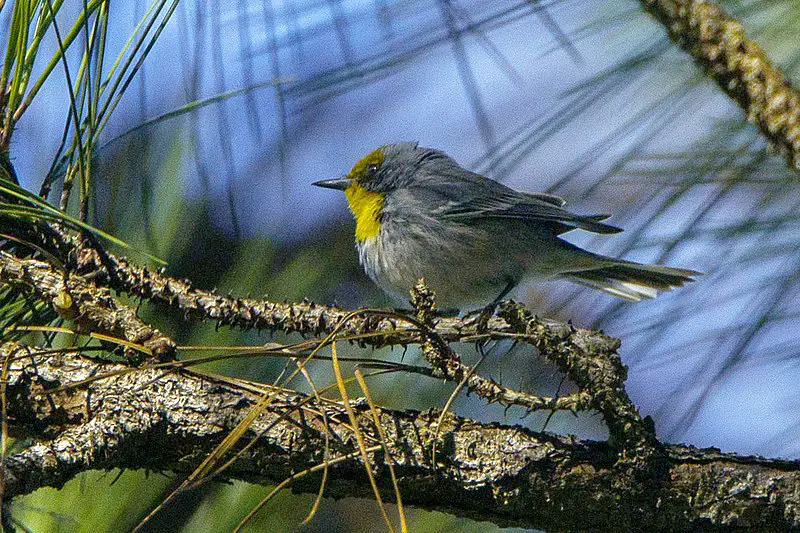
The Olive-capped Warbler is a species of New World warbler found in western and eastern Cuba, Grand Bahama and the Abaco Islands. It can typically be seen living amongst pine forests or near mixed woodlands.
This small bird has olive green feathers on its head that distinguishes it from other similar birds in its region. Its diet consists mainly of insects; however, they also feed off fruits such as those native to their natural habitats.
They are territorial birds who sing loudly during courtship displays in order to attract mates with whom they will form monogamous relationships for one breeding season at least.
The Olive-capped Warbler helps maintain balance within ecosystems by preying upon pests like moths, beetles and caterpillars which might otherwise cause damage to crops if left unchecked by predators like this avian species.Scientific classification:
| Kingdom | Animalia |
| Phylum | Chordata |
| Class | Aves |
| Order | Passeriformes |
| Family | Parulidae |
| Genus | Setophaga |
| Species | S. pityophila |
9. West Indian Woodpecker
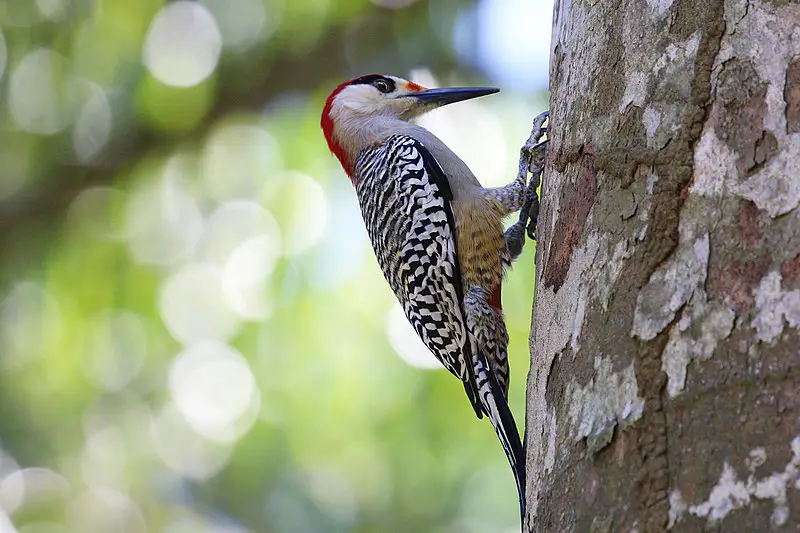
The West Indian woodpecker is a species of bird belonging to the family Picidae. It can be found in Cuba, the Bahamas and the Cayman Islands, living mainly in subtropical or tropical dry forest, lowland moist forests and mangrove habitats.
This species has been observed to exhibit polyandrous breeding behaviour – meaning that one female mates with multiple males at once – making it quite unique among its peers.
The diet of this bird consists mostly of insects which are gleaned from tree trunks by probing or drilling into them using their powerful bills; they will also feed on fruits when available.
Despite being listed as Least Concern by IUCN Red List due to its wide range and stable population, human activities such as deforestation have caused some decline in numbers for this species.Scientific classification:
| Kingdom | Animalia |
| Phylum | Chordata |
| Class | Aves |
| Order | Piciformes |
| Family | Picidae |
| Genus | Melanerpes |
| Species | M. superciliaris |
10. Greater Flamingos
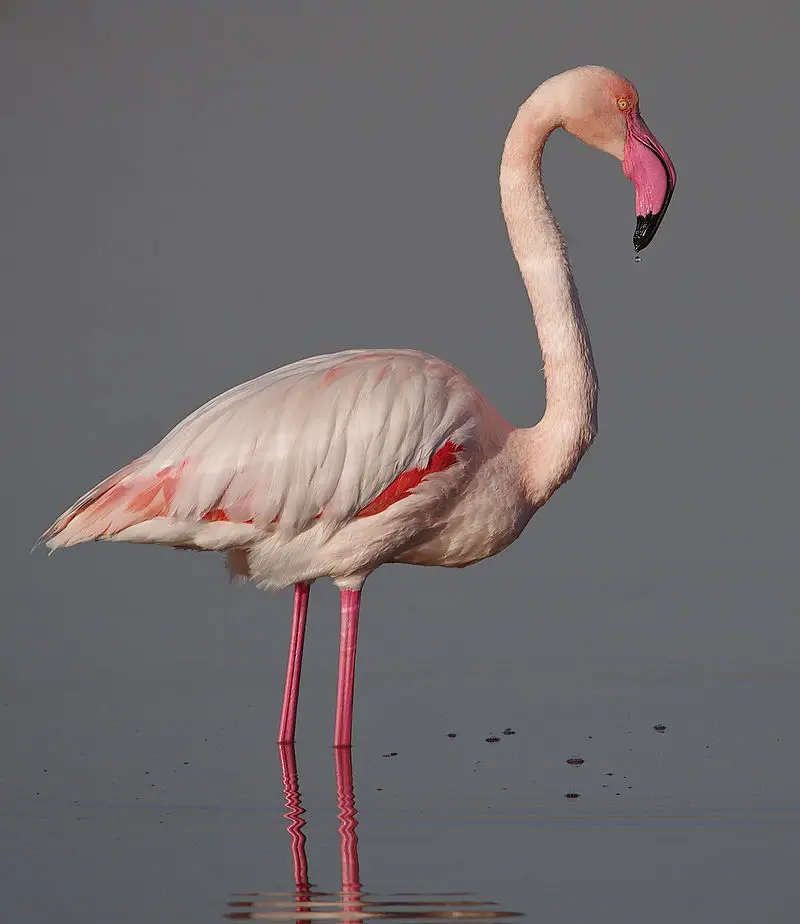
The Greater Flamingo (Phoenicopterus ruber) is the most widespread species of flamingos and can be found in parts of Europe, Africa, Asia and South America.
It has an unmistakable bright pink plumage that stands out against its white feathers. Its long legs are also a distinguishing feature as they reach up to 46 inches long.
The bill is curved downwards with a black tip at the end, which makes it easy for them to filter food from water sources like lakes or lagoons.
This diet mainly consists of small shrimp-like crustaceans called brine shrimp along with other aquatic insects and plants.
They also have salt glands on their tongues that help remove excess salt from ocean waters when they drink seawater as part of their regular diet.Scientific classification:
| Kingdom | Animalia |
| Phylum | Chordata |
| Class | Aves |
| Order | Phoenicopteriformes |
| Family | Phoenicopteridae |
| Genus | Phoenicopterus Linnaeus, 1758 |
11. White-Cheeked Pintail
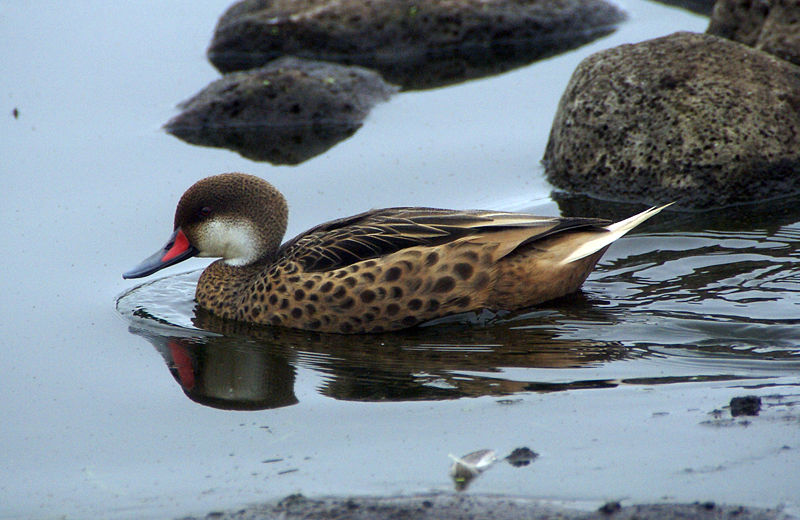
The white-cheeked pintail is a species of dabbling duck first described by Carl Linnaeus in 1758. This beautiful bird can be found mainly in the Caribbean, South America, and Galápagos Islands.
It prefers to inhabit brackish lakes or other waters with some salinity where it swims gracefully amongst its environment.
White-cheeked pintails have striking brown plumage on their back which contrasts beautifully against their white cheeks and bellies.
They also possess an elongated tail that aids them during flight as well as helping them attract potential mates while they are courting.
These birds feed primarily on aquatic invertebrates but may also consume small fish or plant material if available.
The conservation status of the white-cheeked pintail is currently considered “Least Concern” due to its wide distribution range and stable population numbers across much of its native habitat range.Scientific classification:
| Kingdom | Animalia |
| Phylum | Chordata |
| Class | Aves |
| Order | Anseriformes |
| Family | Anatidae |
| Genus | Anas |
| Species | A. bahamensis |
12. Black-Faced Grassquit
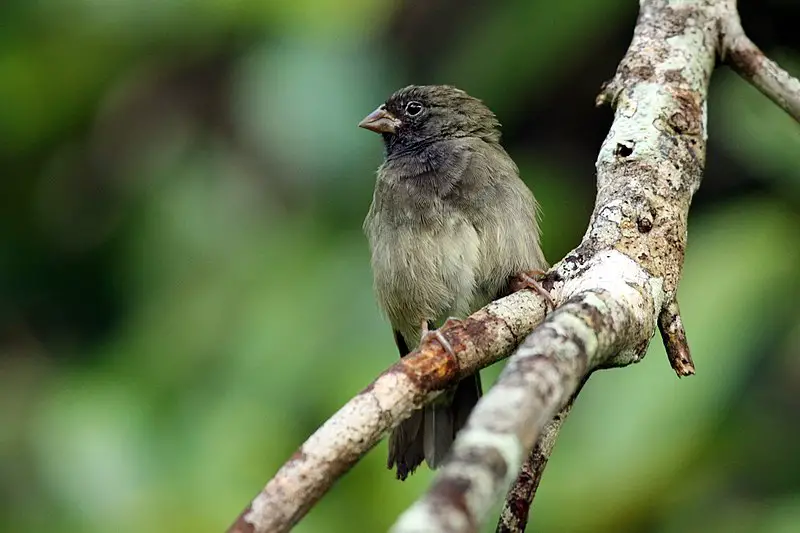
The Black-faced grassquit is a small bird belonging to the tanager family, genetically related to Darwin’s finches. It breeds mainly in the West Indies and along certain parts of Colombia and Venezuela.
The Swedish naturalist Carl Linnaeus first formally described it back in 1766 as part of his twelfth edition work on species classification.
This type of bird has a black head with white spots around its eyes, grey wings and tail feathers; its body is brownish orange or yellow with darker shades towards the belly area.
Its diet consists mostly of seeds from grasses but may also include other insects for additional nutrition during breeding season.Scientific classification:
| Kingdom | Animalia |
| Phylum | Chordata |
| Class | Aves |
| Order | Passeriformes |
| Family | Thraupidae |
| Genus | Melanospiza |
| Species | M. bicolor |
Also Featured In: Birds that You’ll Find in Puerto Rico, British Virgin Islands Birds You Need to See
13. Mimid
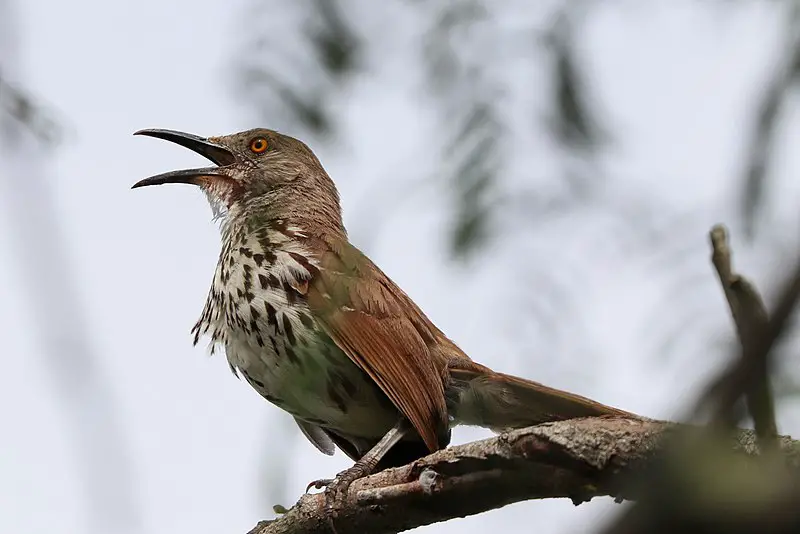
Mimid birds are a diverse family of passerines found in the New World. They have an impressive vocal range and many species excel at mimicking other bird songs, as well as noises from their environment.
Mimids can be identified by their flat heads with short crest feathers, long tails, large eyes and strong legs for hopping between branches.
These birds typically inhabit open woodlands or scrubland areas where they feed on insects such as beetles, caterpillars and grasshoppers.
Some species also supplement their diet with fruits or grains when available. While most do not migrate far during winter months some may undertake longer migrations to warmer climates if necessary to survive cold weather spells.
The wide variety of sounds these talented singers produce make them one of nature’s great musical performers.Scientific classification:
| Kingdom | Animalia |
| Phylum | Chordata |
| Class | Aves |
| Order | Passeriformes |
| Superfamily | Muscicapoidea |
| Family | Mimidae Bonaparte, 1853 |
14. Waxwing Birds
Waxwing birds are a medium-sized species of passerine bird found in the Northern hemisphere. They have distinctive crest feathers and red waxy tips on their wings, which give them their name.
The plumage of waxwings is mostly grey and brown with yellow underparts and white wingbars. These birds feed mainly on fruit but will also eat insects, buds, sap and berries.
In summer they migrate to northern regions where food sources are more abundant; while in winter they move southwards into milder climates for survival.
Waxwings display flocking behaviour during migration as well as when searching for food sources; however these groups often break up if disturbed by humans or predators.
Although not considered threatened globally due to their wide distribution range, local populations may be affected by habitat destruction or climate change leading to population decline over time
15. Sittidae
Waxwing birds are a medium-sized species of passerine bird found in the Northern hemisphere. They have distinctive crest feathers and red waxy tips on their wings, which give them their name.
The plumage of waxwings is mostly grey and brown with yellow underparts and white wingbars. These birds feed mainly on fruit but will also eat insects, buds, sap and berries.
In summer they migrate to northern regions where food sources are more abundant; while in winter they move southwards into milder climates for survival.
Waxwings display flocking behaviour during migration as well as when searching for food sources; however these groups often break up if disturbed by humans or predators.
Although not considered threatened globally due to their wide distribution range, local populations may be affected by habitat destruction or climate change leading to population decline over time
16. Regulidae
Waxwing birds are a medium-sized species of passerine bird found in the Northern hemisphere. They have distinctive crest feathers and red waxy tips on their wings, which give them their name.
The plumage of waxwings is mostly grey and brown with yellow underparts and white wingbars. These birds feed mainly on fruit but will also eat insects, buds, sap and berries.
In summer they migrate to northern regions where food sources are more abundant; while in winter they move southwards into milder climates for survival.
Waxwings display flocking behaviour during migration as well as when searching for food sources; however these groups often break up if disturbed by humans or predators.
Although not considered threatened globally due to their wide distribution range, local populations may be affected by habitat destruction or climate change leading to population decline over time
17. Stone-Curlew

Stone-curlews, also known as dikkops or thick-knees, are a family of birds that have adapted to live in tropical and temperate regions throughout the world.
They can be found in Africa, Asia and Australia with two or more species per region. Despite being classified as waders, most prefer dry arid habitats over moist wetlands.
Stone-curlews typically have long legs which help them navigate through their preferred terrain efficiently; some species even stand at an impressive height when standing on those long legs.
Additionally they feature cryptic plumage which helps them blend into their surroundings while hunting for prey such as insects and small mammals like rodents.
These unique bird’s calls are easily recognizable; it has been said that hearing one is similar to listening to someone whistling ‘Keee Weee’.Scientific classification:
| Kingdom | Animalia |
| Phylum | Chordata |
| Class | Aves |
| Order | Charadriiformes |
| Suborder | Chionidi |
| Family | Burhinidae Mathews, 1912 |
18. Threskiornithidae
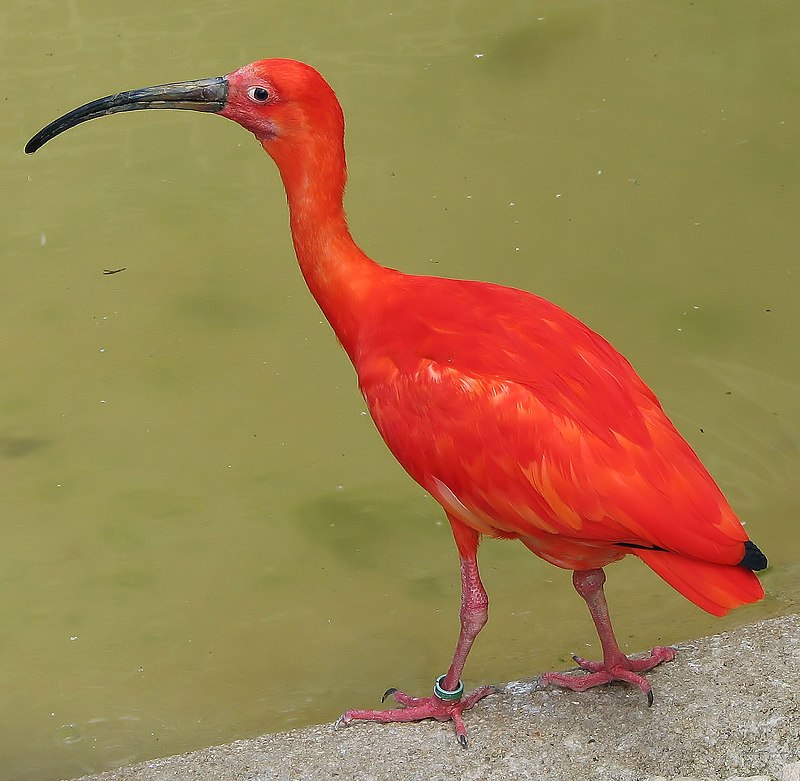
Threskiornithidae is a family of large wading birds which includes 36 species. These birds are traditionally divided into two subfamilies – the ibises and the spoonbills.
However, recent genetic analysis has shown that spoonbills actually belong to Old World ibis group, while New World ibises form an early offshoot from this lineage.
Threskiornithidse members have long curved beaks with serrated edges used for catching fish in shallow water or mudflats, as well as other aquatic invertebrates like crustaceans and mollusks.
They also feed on plant matter such as grains and seeds found close to wetlands areas where they live.
This diverse diet makes them important scavengers in their ecosystems, helping maintain healthy populations of native wildlife by controlling insect numbers and dispersing energy-rich seeds throughout wetland habitats.Scientific classification:
| Kingdom | Animalia |
| Phylum | Chordata |
| Class | Aves |
| Order | Pelecaniformes |
| Suborder | Ardei |
| Family | Threskiornithidae Richmond, 1917 |
19. Motacillidae
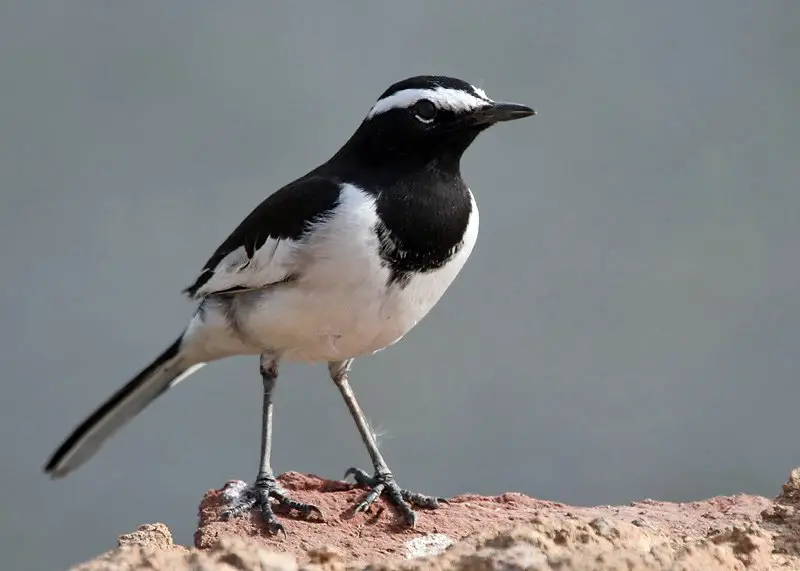
Motacillidae is a family of small passerine birds consisting of around 70 species. They are found across Europe, Africa, Asia and even Alaska with two migratory breeding species.
The three genera they belong to include wagtails which typically have medium to long tails; longclaws that can only be spotted in the Afrotropics; and pipits which possess the most cosmopolitan distribution worldwide.
These birds feed on insects as well as seeds for their diets and are usually seen in open habitats such grasslands or wetlands where food sources like invertebrates can easily be accessed.
Most Motacillidae species also use mud nests during breeding season making them easy targets for predators so it’s important we protect these beautiful creatures.Scientific classification:
| Kingdom | Animalia |
| Phylum | Chordata |
| Class | Aves |
| Order | Passeriformes |
| Superfamily | Passeroidea |
| Family | Motacillidae Horsfield, 1821 |
20. Northern Storm Petrels
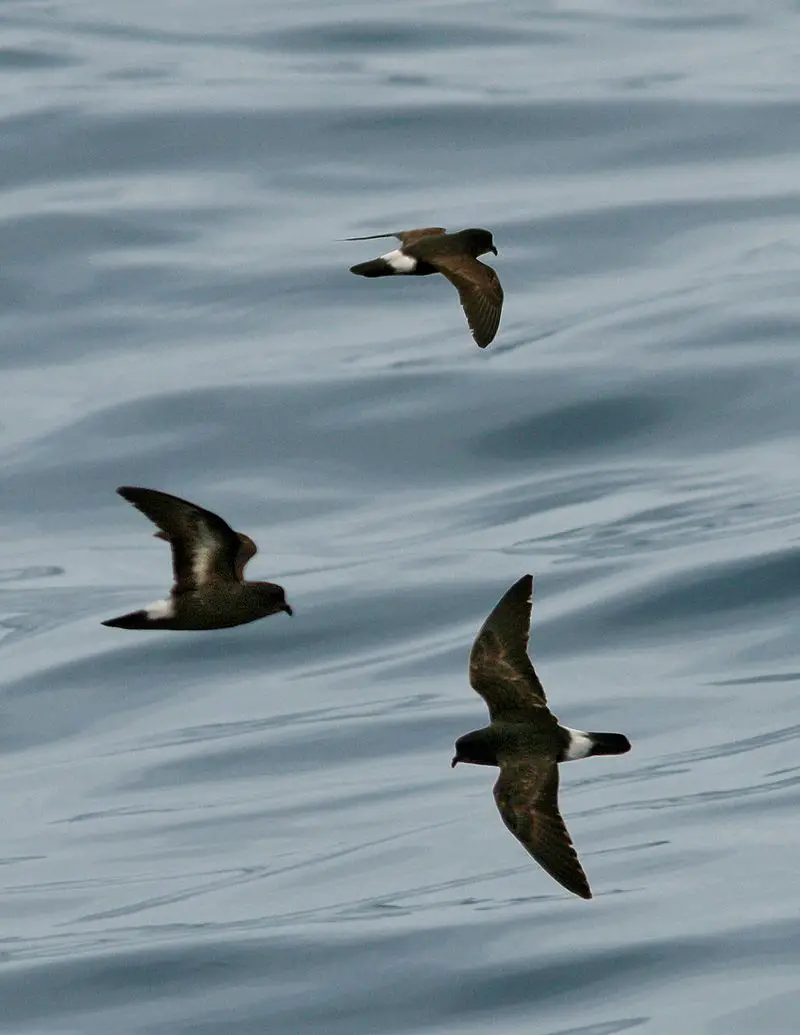
Northern storm petrels are one of the smallest seabirds, inhabiting oceans all over the world.
They have a unique ability to hover over water and pick planktonic crustaceans and small fish from the surface.
Northern storm petrels belong to the genus Hydrobates in family Hydrobatidae, part of Procellariiformes order.
This species was once lumped with austral storm petrel but recent studies show that they weren’t related closely which led them being split into two distinct species now.
These birds can be identified by their dark grey upperparts and wings along with white underparts when seen from afar while feeding on ocean’s surface.Scientific classification:
| Kingdom | Animalia |
| Phylum | Chordata |
| Class | Aves |
| Order | Procellariiformes |
| Family | Hydrobatidae Mathews, 1912 |
| Genus | Hydrobates F. Boie, 1822 |
21. Procellariidae
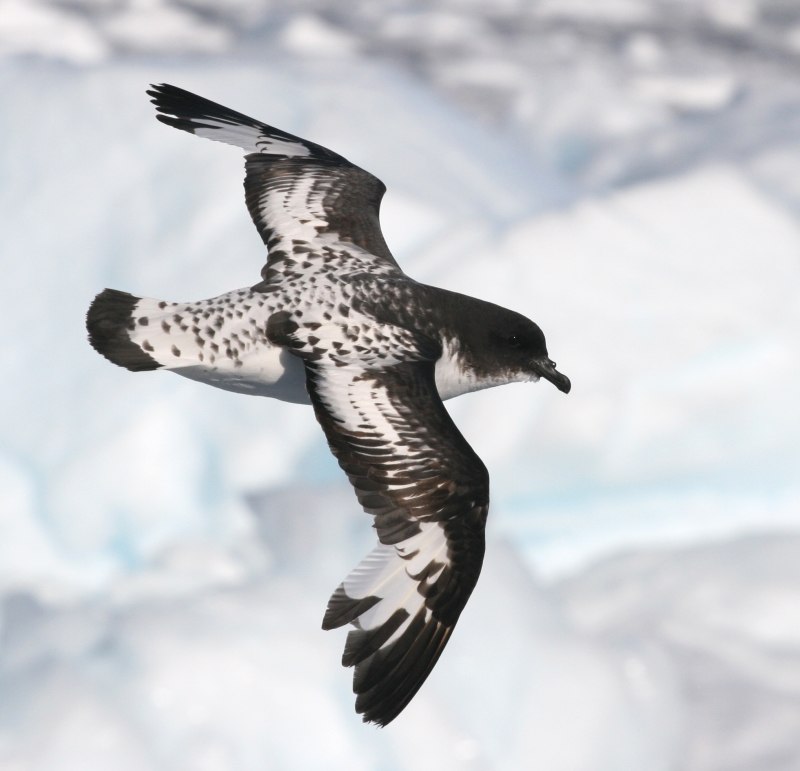
Procellariidae is a diverse family of seabirds belonging to the bird order Procellariiformes.
These birds are commonly referred to as tubenoses and include fulmarine petrels, gadfly petrels, diving petrels, prions, and shearwaters.
They range in size from the small storm-petrel which measures around 18cm long to the giant albatross which can reach up to 3 meters in length.
Generally found near oceans or coasts where they feed on fish as well as squid and other marine life depending on species.
Many procellariids will also nest inland during breeding season before returning back out at sea for most of their lives.
Their wings have specially adapted feathers that give them incredible gliding abilities allowing them literally fly with minimal effort over vast distances across oceanic regionsScientific classification:
| Kingdom | Animalia |
| Phylum | Chordata |
| Class | Aves |
| Order | Procellariiformes |
| Family | Procellariidae Leach, 1820 |
22. Plovers

Plovers are a family of around 64-68 species of ground-dwelling birds, commonly found in open country such as fields, meadows and tundras.
They have short bills with webbed feet to help them forage through mud or shallow water.
Plover plumage is usually mottled brown though some species may have brighter colors on the head and wings.
These birds feed mainly on insects but can also eat small crustaceans and worms.
Plovers breed during springtime when they dig holes in sandy or pebbled beaches to lay their eggs which hatch after about 3 weeks incubation period.
They use distraction display behaviour by pretending an injury to the predators away from their nests if needed for protecting their young ones.Scientific classification:
| Kingdom | Animalia |
| Phylum | Chordata |
| Class | Aves |
| Order | Charadriiformes |
| Family | Charadriidae Leach, 1820 |
23. Gnatcatcher
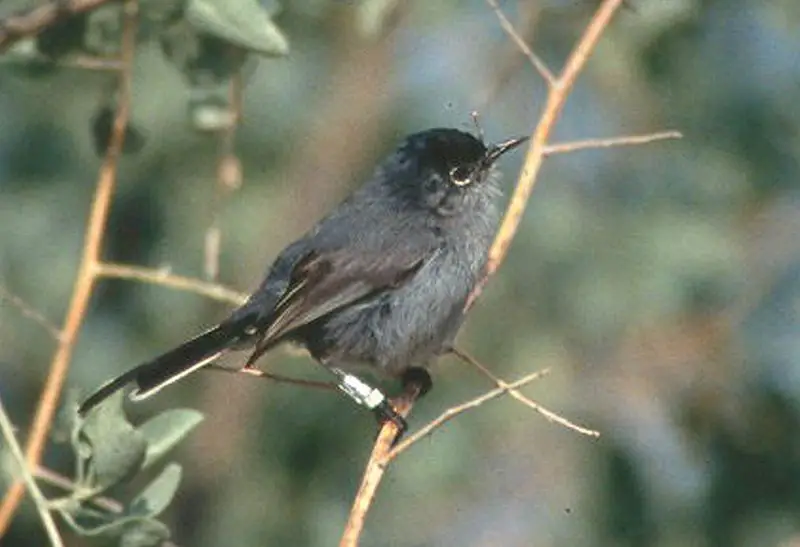
Gnatcatchers are small passerine birds from the family Polioptilidae. They inhabit North and South America, apart from far south regions and high Andean areas.
Most species of this mostly tropical and subtropical group remain in one area year-round; however, the blue-grey gnatcatcher of U.S.A and Canada migrate to warmer climates during wintertime.
Gnatcatchers share a close relation with wrens.[1] The size varies between 5–7 inches long depending on specie, they typically have dark upperparts while their underparts range in color: white or greyish shades may predominate but some species show yellow tinting too.
Their diet consists mainly insects which is usually captured by short sallies above vegetation level when foraging for food.Scientific classification:
| Kingdom | Animalia |
| Phylum | Chordata |
| Class | Aves |
| Order | Passeriformes |
| Superfamily | Certhioidea |
| Family | Polioptilidae Baird, 1858 |
24. Austral Storm Petrels
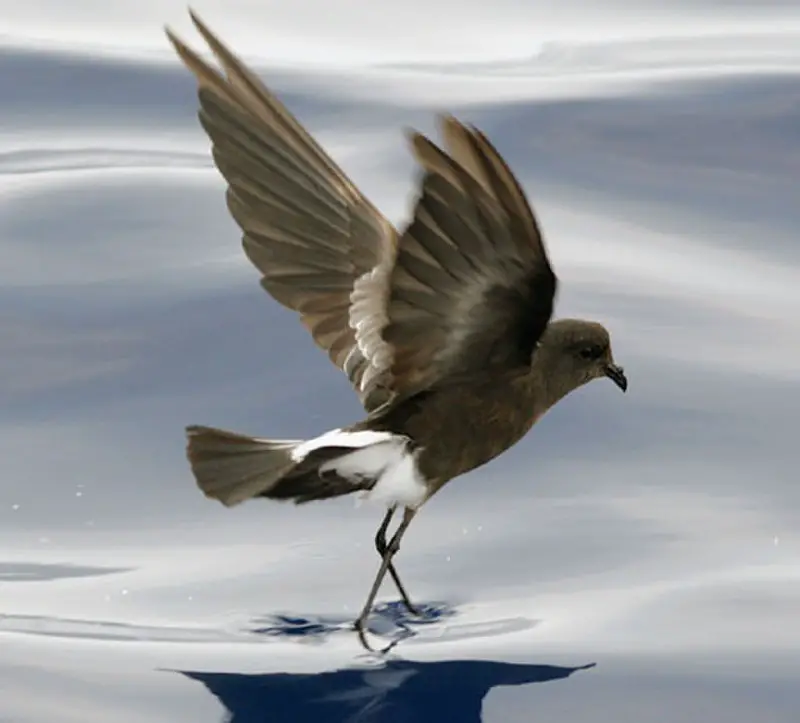
Austral Storm Petrels are the smallest of seabirds, belonging to the family Oceanitidae and order Procellariiformes.
They have a cosmopolitan distribution across all oceans, with their flight being fluttering and sometimes bat-like in appearance.
These birds feed on planktonic crustaceans as well as small fish that they pick from the surface while hovering over it.
Their plumage is mostly dark grey or blackish brown above; underparts may be white or mottled gray.
The feet vary between species but usually have pale yellow webs and claws which help them move easily through water when searching for food.
Austral storm petrels often make nests on remote islands where these birds can breed safely without any disturbances from humans during their nesting season.Scientific classification:
| Kingdom | Animalia |
| Phylum | Chordata |
| Class | Aves |
| Order | Procellariiformes |
| Family | Oceanitidae Forbes, 1881 |
25. Bahama Mockingbird
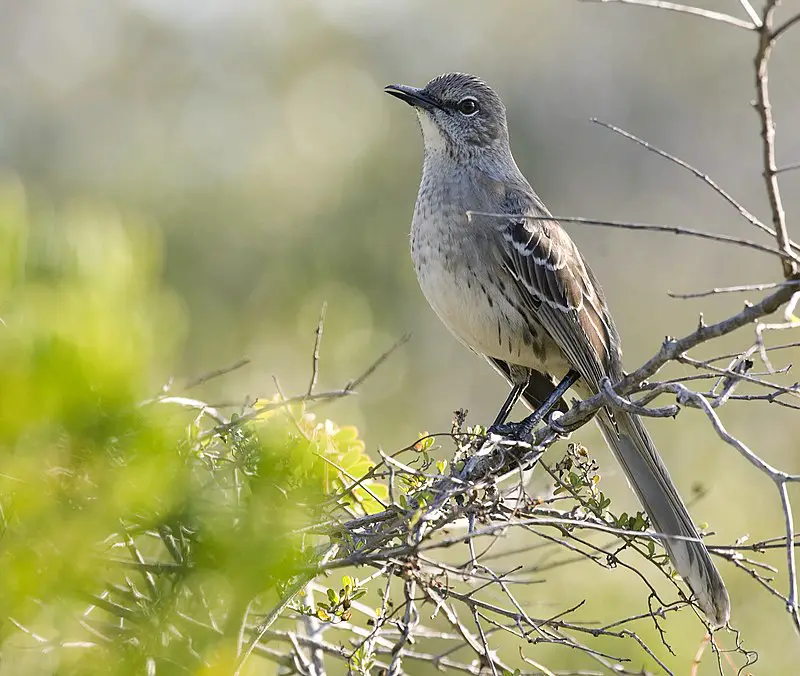
The Bahama Mockingbird is a species of bird found in the Bahamas, Cuba, Jamaica and the Turks and Caicos Islands. It is also known to be a vagrant to Florida.
This medium-sized greyish brown bird has two subspecies – Mimus gundlachii gundlachii (the nominate) and M. g hillii. The specific epithet ‘gundlachii’ honors Juan Gundlach who first described this species in 1841 on his expedition to Cuba.
On an average it measures 28 cm long with a wingspan of 39 cm when fully grown up; however males are larger than their female counterparts by about 10%.
They have gray upperparts along with white underparts which contain spots running down its sides as well as across its breast area for camouflaging themselves against predators like cats or foxes that may prey upon them during nesting season or otherwise.
These birds primarily feed on insects alongside fruits & berries occasionally too making them omnivorous creatures.Scientific classification:
| Kingdom | Animalia |
| Phylum | Chordata |
| Class | Aves |
| Order | Passeriformes |
| Family | Mimidae |
| Genus | Mimus |
| Species | M. gundlachii |
26. West Indian Whistling Duck
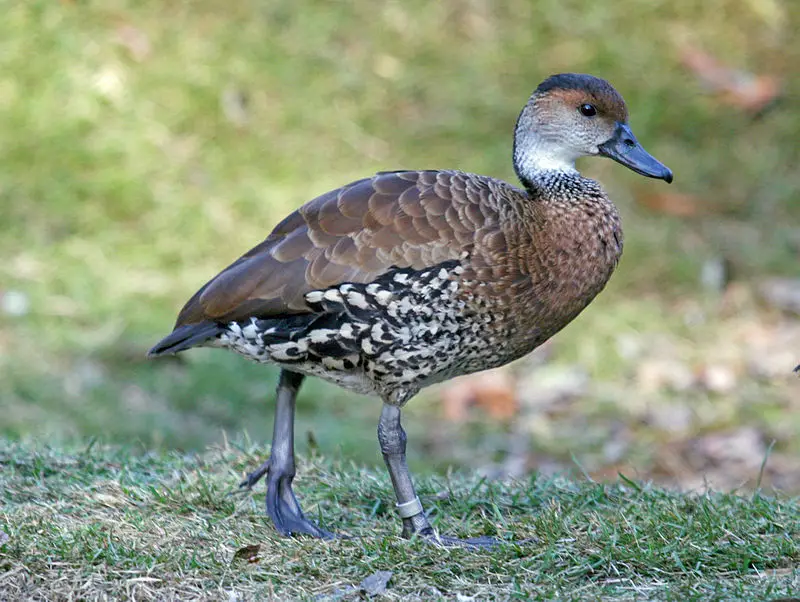
The West Indian whistling duck is a beautiful species of bird native to the Caribbean. This duck has an unmistakable call, as its name implies it can whistle.
It also has black bill and legs with grey-brown feathers that help camouflage it in its environment.
The primary breeding range of this species includes the Bahamas, Cuba, Cayman Islands, Antigua and Barbuda Jamaica, Hispaniola and Puerto Rico where they live mainly in shallow freshwater wetlands such as ponds or swamps.
Besides their distinctive whistles these birds are able to communicate through various other calls including grunts , honks and quacks.
They feed on aquatic plants but may occasionally eat small invertebrates like insects too.
Despite being hunted for food by humans these ducks still remain widespread throughout their habitats due to successful conservation efforts put into place over recent years making them a symbol of hope for many wildlife enthusiasts around the world today.Scientific classification:
| Kingdom | Animalia |
| Phylum | Chordata |
| Class | Aves |
| Order | Anseriformes |
| Family | Anatidae |
| Genus | Dendrocygna |
| Species | D. arborea |
27. American Flamingo
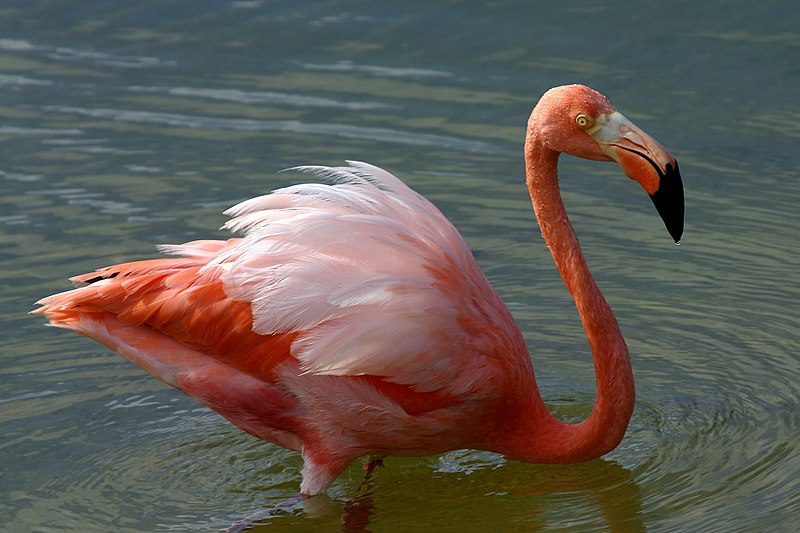
The American flamingo is a large species of bird found in the Neotropics. It has bright pink feathers and long legs, making it easily distinguishable from other species of flamingos.
The diet consists mostly of shrimp and small fish but they are also known to eat algae, aquatic insects, mollusks, crustaceans and seeds.
They live around coastal lagoons or salt ponds in colonies with thousands of birds nesting together on mud flats.
Flamingos build nests out of sticks that sit atop their feet as they wade through shallow waters looking for food during low tide periods when these areas become more accessible for feeding purposes.
These birds have an interesting courtship ritual involving neck stretching which looks like a dance to attract mates before breeding season begins in May-June each year leading to chicks hatching during July-August time periodScientific classification:
| Kingdom | Animalia |
| Phylum | Chordata |
| Class | Aves |
| Order | Phoenicopteriformes |
| Family | Phoenicopteridae |
| Genus | Phoenicopterus |
| Species | P. ruber |
28. Western Spindalis
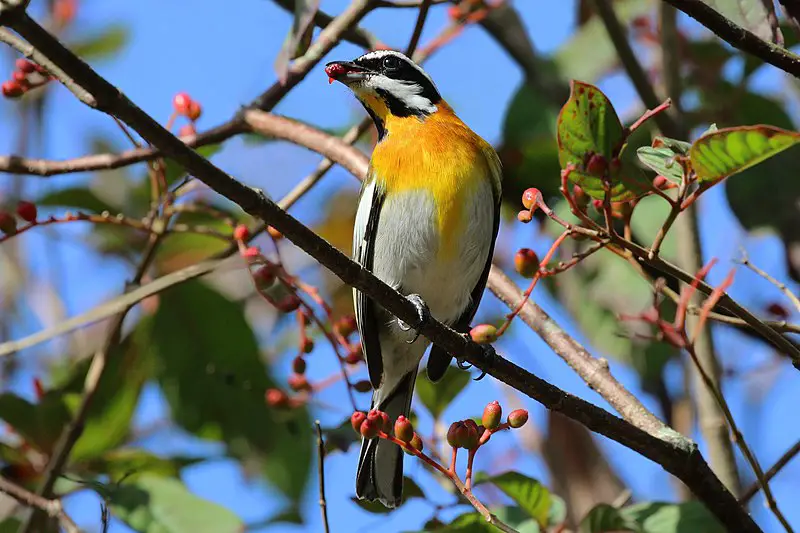
The Western Spindalis is a unique and fascinating species of songbird. It was formerly classified as a stripe-headed tanager, but it has since been reclassified as incertae sedis – that is, its exact place in the avian family tree cannot be determined.
This bird stands out from other birds due to its colorful plumage; males have yellow heads with black streaks across their faces while females are olive green all over with white stripes on the wings and back.
They inhabit tropical forests throughout much of Central America where they feed mainly on fruits and insects.
These birds are agile fliers who often flock together in small groups or pairs when searching for food sources such as mangoes, papayas, figs or even nectar from flowers.
The Western Spindalis makes an interesting addition to any backyard aviary.Scientific classification:
| Kingdom | Animalia |
| Phylum | Chordata |
| Class | Aves |
| Order | Passeriformes |
| Family | Spindalidae |
| Genus | Spindalis |
| Species | S. zena |
29. White-Crowned Pigeon
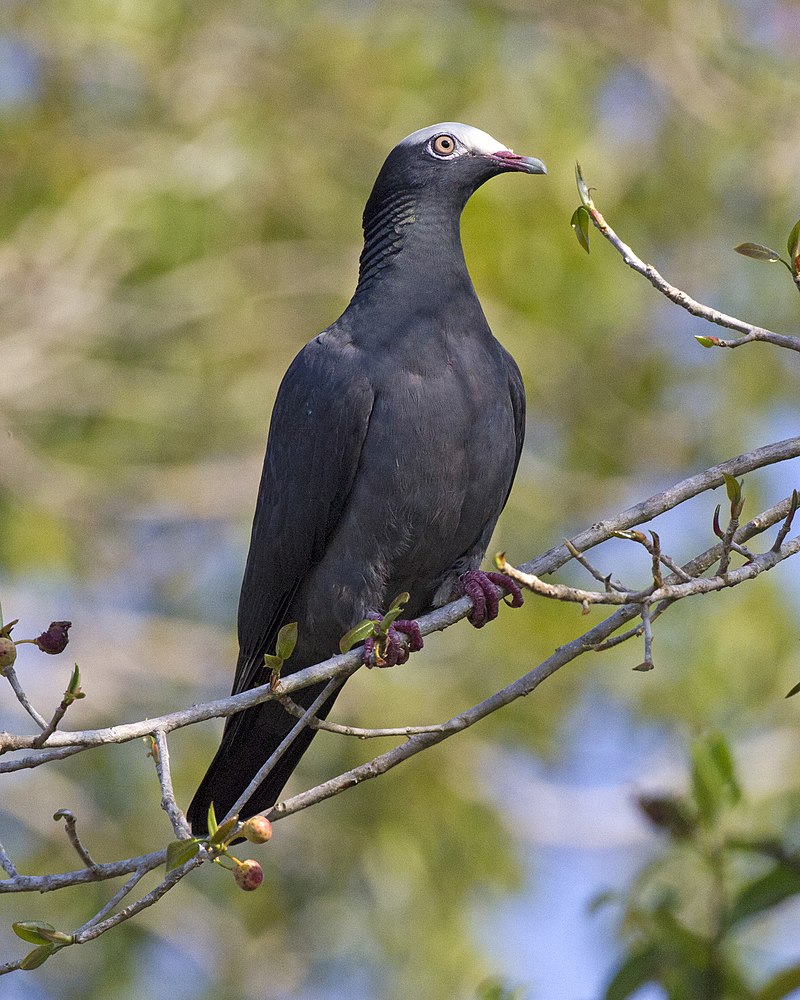
The White-crowned Pigeon is a species of bird belonging to the Columbidae family, widely found in the Caribbean. In the first half of the 18th century it was described as such.
This pigeon has been immortalized by artist John James Audubon through his watercolor painting featured in Birds of America published during early 19th century.
These birds primarily feed on fruits and seeds and have white crowns that make them easily recognizable even from afar.
The beauty of these birds makes them popular amongst birdwatchers all over the world who flock to observe their behavior while they eat or nest.Scientific classification:
| Kingdom | Animalia |
| Phylum | Chordata |
| Class | Aves |
| Order | Columbiformes |
| Family | Columbidae |
| Genus | Patagioenas |
| Species | P. leucocephala |
30. Cuban Pewee
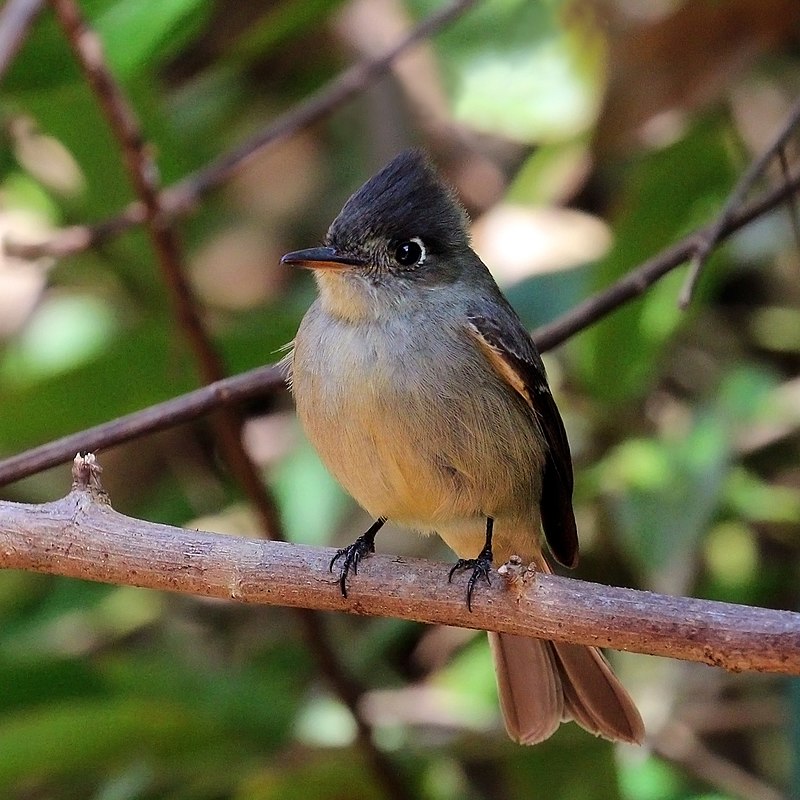
The Cuban Pewee is a species of bird belonging to the Tyrannidae family, found in Cuba and the northern Bahamas. It has a dark olive-grey upper body and dark grey underneath with white underwings.
Its head features an eye stripe that forms into a crescent shape near its beak.
Measuring 16 cm long, it can easily be identified by its distinct call heard during breeding season which includes whistles, chirps and rattling noises like marbles being shaken in a container.
The Cuban Pewee feeds on insects caught midair or gleaned from tree branches while perching.
During winter months they form mixed flocks with other birds where they search for food together such as fruit or nectar from flowers at forest edges or gardens – making them beneficial pollinators too.Scientific classification:
| Kingdom | Animalia |
| Phylum | Chordata |
| Class | Aves |
| Order | Passeriformes |
| Family | Tyrannidae |
| Genus | Contopus |
| Species | C. caribaeus |
31. Royal Tern
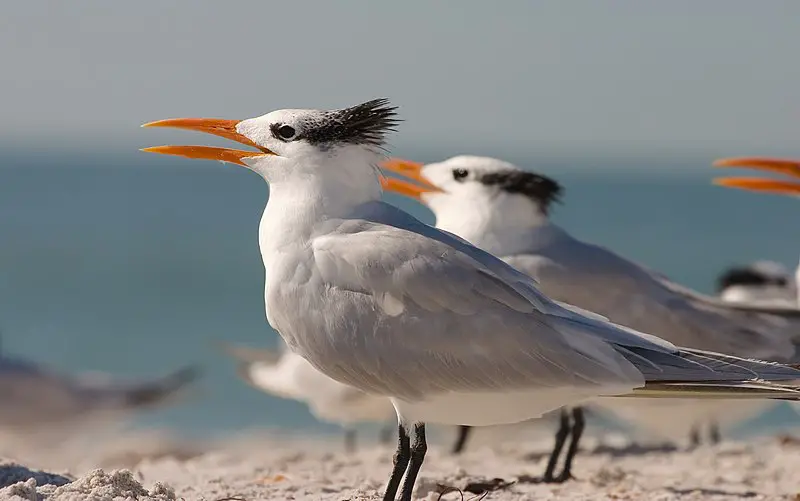
The Royal Tern is a beautiful seabird, endemic to the Americas. It has been spotted as far away as Europe on rare occasions though.
The species was first described by Georges-Louis Leclerc in 1781 from a specimen found in French Guiana and later illustrated with hand-coloured plates.
These birds have elaborate courtship displays that involve loud vocalizations and energetic aerial acrobatics.
They typically mate for life, nesting together near marshes or beaches each season close to their food source of fish and other small aquatic creatures. Their white plumage brightens up coastlines across America – they are truly majestic.Scientific classification:
| Kingdom | Animalia |
| Phylum | Chordata |
| Class | Aves |
| Order | Charadriiformes |
| Family | Laridae |
| Genus | Thalasseus |
| Species | T. maximus |
32. Bridled Tern
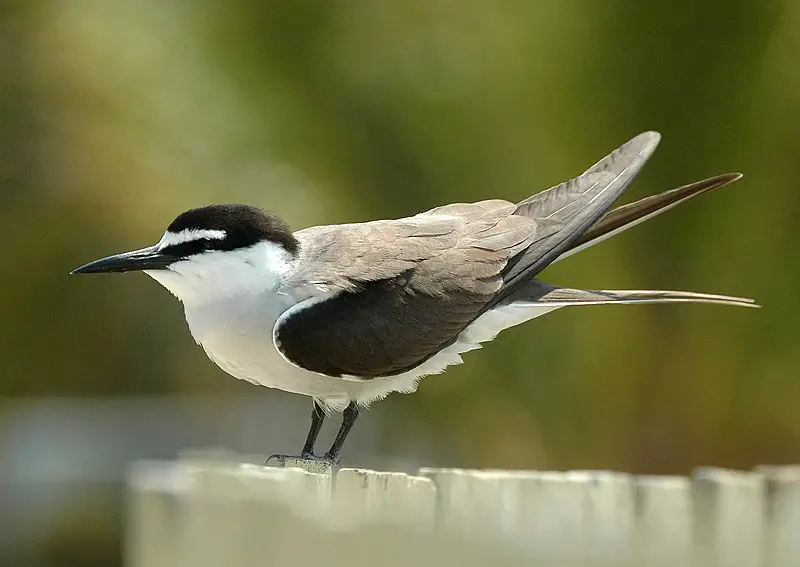
The Bridled Tern is a medium-sized seabird of the family Laridae, found in tropical oceans. It has an impressive wingspan of 77–81 cm and measures 30–32 cm in length – similar to that of the Common Tern.
Its scientific name originates from Ancient Greek; Onux meaning “claw” or “nail”, and Prion, which translates as “saw”. The specific anaethetus means ‘senseless’ or ‘stupid’.
These birds are elegant flyers with greyish brown upperparts and white underparts when they take off into flight, while their head appears black on top but turns to white below the eyes with a thin line between them.Scientific classification:
| Kingdom | Animalia |
| Phylum | Chordata |
| Class | Aves |
| Order | Charadriiformes |
| Family | Laridae |
| Genus | Onychoprion |
| Species | O. anaethetus |
33. Red-Legged Thrush
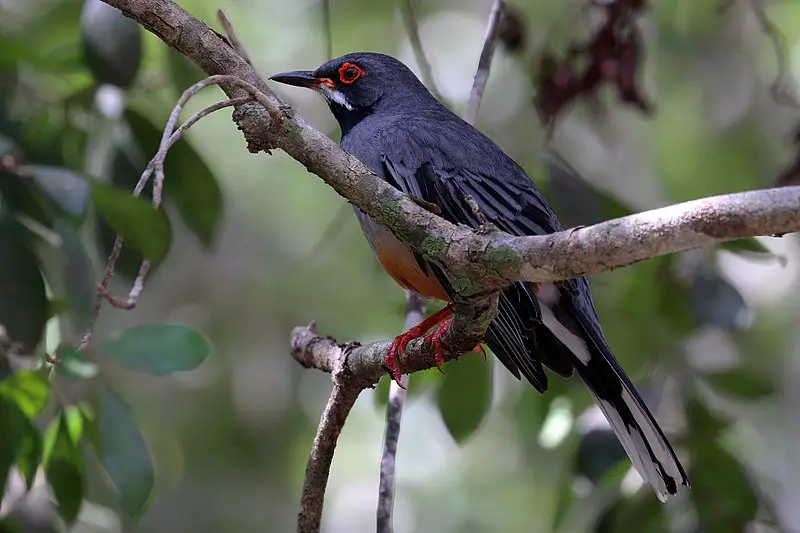
The Red-legged Thrush is a species of bird belonging to the Turdidae family, native to the Caribbean.
It can be found in places such as Bahamas, Cayman Islands and Puerto Rico where it goes by the name ‘Zorzal de patas coloradas’.
Unfortunately, this beautiful creature has been extirpated from Swan Island, Honduras. Its natural habitats are subtropical or tropical moist lowland forests and heavily degraded former forest areas.
This small thrush measures up to 22 cm in length with blackish upperparts while its underparts have reddish tinge on them which gives it an attractive appearance.
They mainly feed on fruits but also hunt for insects occasionally making it omnivorous in nature.Scientific classification:
| Kingdom | Animalia |
| Phylum | Chordata |
| Class | Aves |
| Order | Passeriformes |
| Family | Turdidae |
| Genus | Turdus |
| Species | T. plumbeus |
34. Yellow-Throated Warbler
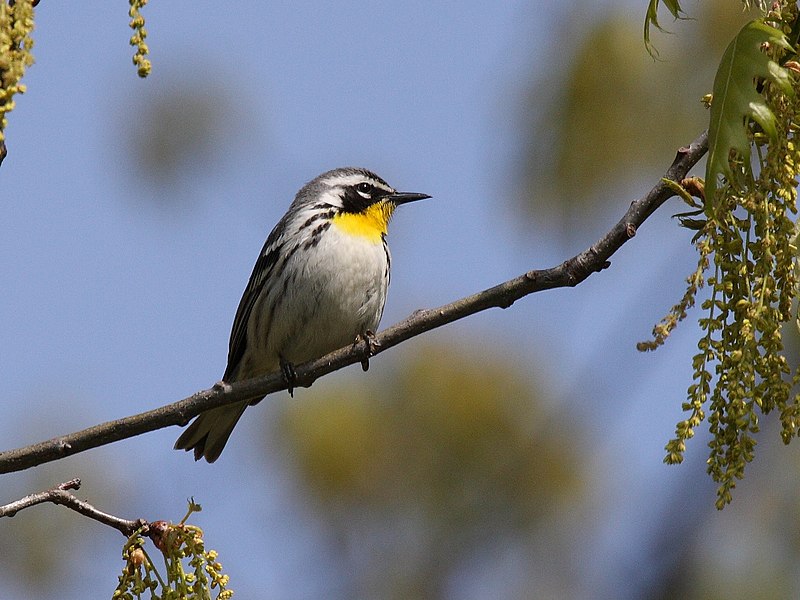
The Yellow-throated Warbler (Setophaga dominica) is a small migratory songbird found in temperate North America. It belongs to the Parulidae family of New World warblers.
Males have grey upperparts and wings with double white wing bars, yellow throats, and white underparts streaked with black on the flanks.
Females are less brightly colored, having olive green or brownish gray back and wings with two faint wingbars instead of one bright one visible in males.
These birds feed mainly on insects during their breeding season but will also eat fruits at other times of year while they migrate southwards for wintering grounds where they will search for nectar from flowers as well as fruit sources such as berries and wild grapes.
They can be seen actively searching through trees for food items near bird feeders during migration time periods making them an interesting species to observe.Scientific classification:
| Kingdom | Animalia |
| Phylum | Chordata |
| Class | Aves |
| Order | Passeriformes |
| Family | Parulidae |
| Genus | Setophaga |
| Species | S. dominica |
35. Greater Antillean Bullfinch
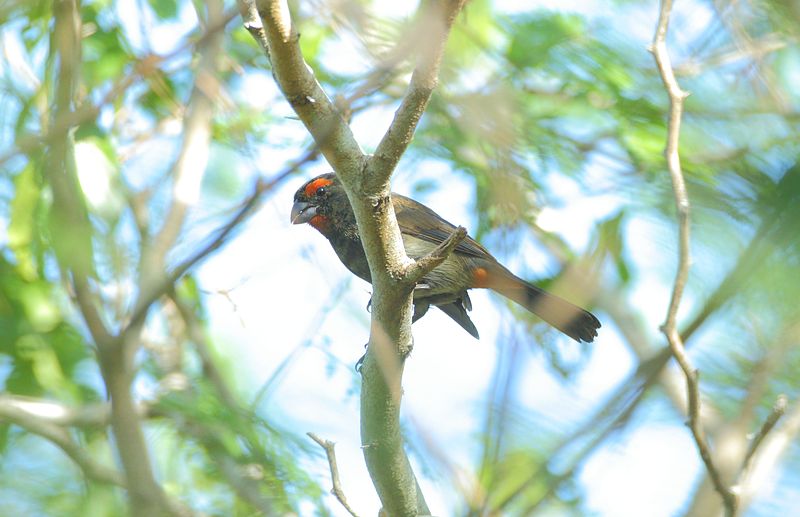
The Greater Antillean Bullfinch is a species of bird in the Thraupidae family. It can be found across many places, like the Bahamas, Hispaniola (Dominican Republic and Haiti), Jamaica, and Turks & Caicos Islands.
This beautiful bird prefers to inhabit subtropical or tropical dry forests as well as moist lowland/montane forests.
Its main features are its bright yellow bill with pink gape flange, olive green upperparts while underparts have grey tinge on them along with some white markings near breast area.
All these characteristics help it stand out from other birds living in similar habitats.Scientific classification:
| Kingdom | Animalia |
| Phylum | Chordata |
| Class | Aves |
| Order | Passeriformes |
| Family | Thraupidae |
| Genus | Melopyrrha |
| Species | M. violacea |
36. Key West Quail-Dove
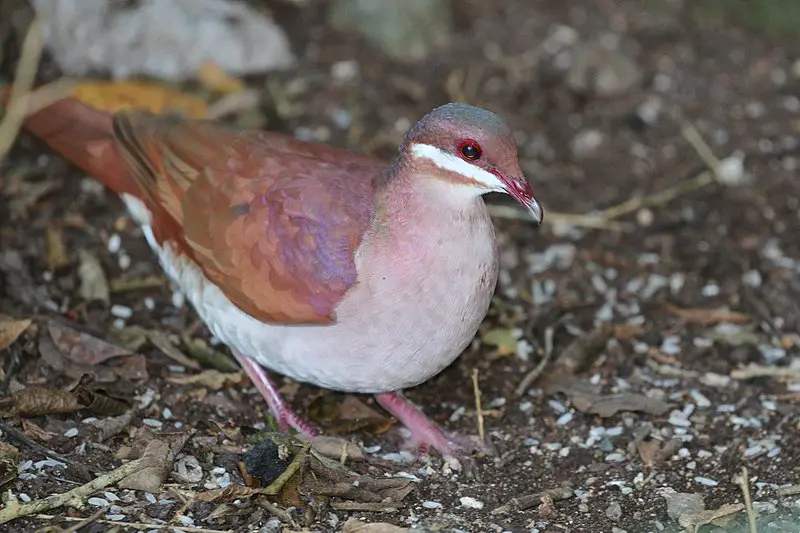
The Key West quail-dove is a species of bird from the Columbidae family, and is closely related to the bridled quail-dove. It breeds in The Bahamas and throughout most of Greater Antilles, except for Jamaica.
Interestingly enough, despite its name it does not currently breed in Florida Keys or Southern mainland Florida.
This dove has a light brown back with white underparts that are streaked on their sides and throat; they also have a distinctive black collar around their neck which makes them easily recognizable along with their red eyes.
These birds tend to live alone or in small flocks near open fields where food (seeds) can be found.
Unfortunately this species’ range seems to be getting smaller due to human activities such as deforestation but there are some conservation efforts being done like creating protected areas within these regions so we hope one day people will get to enjoy watching these beautiful creatures again.Scientific classification:
| Kingdom | Animalia |
| Phylum | Chordata |
| Class | Aves |
| Order | Columbiformes |
| Family | Columbidae |
| Genus | Geotrygon |
| Species | G. chrysia |
37. Antillean Nighthawk
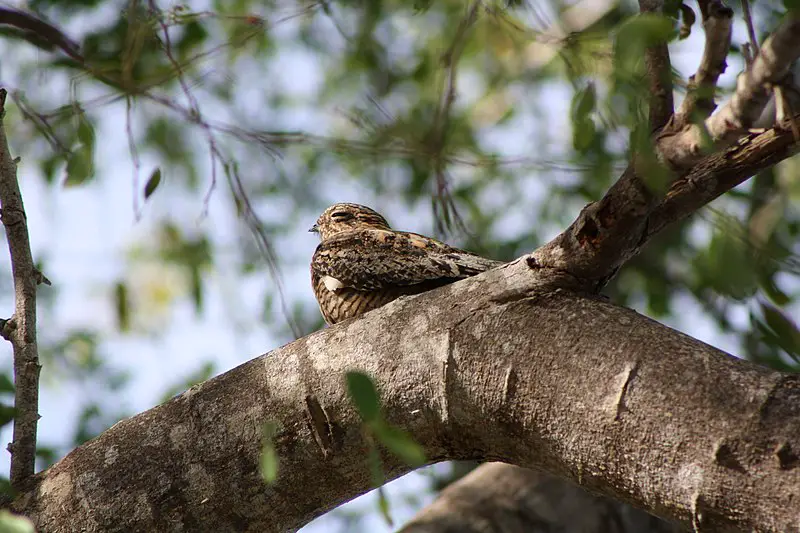
The Antillean nighthawk is an impressive nocturnal bird native to the Caribbean and Florida Keys.
It has a distinct colour scheme of dark brown, grey and white patterning on its upperparts and breast; long wings are black with a white bar visible in flight; tail dark with barring, while underparts are white with blackish-brown streaks.
Named after Cuban naturalist Juan Gundlach, these birds can be found near forest edges or open habitats like savannahs.
They feed primarily by hawking insects at night using their large eyes for good vision in low light conditions.
During breeding season they perform an aerial courtship display involving dives from altitude followed by steep climbs back up again as pairs circle each other doing tight circles around one another – truly spectacular.Scientific classification:
| Kingdom | Animalia |
| Phylum | Chordata |
| Class | Aves |
| Order | Caprimulgiformes |
| Family | Caprimulgidae |
| Genus | Chordeiles |
| Species | C. gundlachii |
Also Featured In: Martinique Island Birds You Should Know, Most Common Birds of Sugarloaf Key
38. Gull-Billed Tern
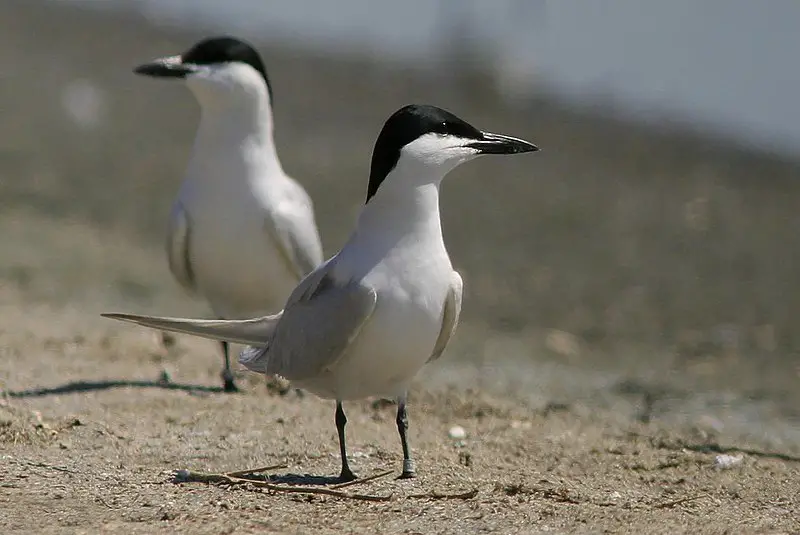
The Gull-billed Tern is a species of seabird from the Laridae family. It has an extensive range, breeding in parts of Europe, Asia, Northwest Africa and North America.
It was formally described by Johann Friedrich Gmelin in 1789 as Sterna nilotica before being reclassified to Gelochelidon nilotica.
The Australian subspecies was previously considered separate but now included with this species.
They are quite small birds measuring around 24 cm long with greyish brown upperparts throughout their body and white underneaths along with black legs and feet.
Their head also features a distinctive yellow bill which they use to hunt for fish on rivers or coasts near shallow waters where they tend to nest during summer months on ground level instead of trees like other terns do usually.Scientific classification:
| Kingdom | Animalia |
| Phylum | Chordata |
| Class | Aves |
| Order | Charadriiformes |
| Family | Laridae |
| Genus | Gelochelidon |
| Species | G. nilotica |
39. La Sagra’s Flycatcher
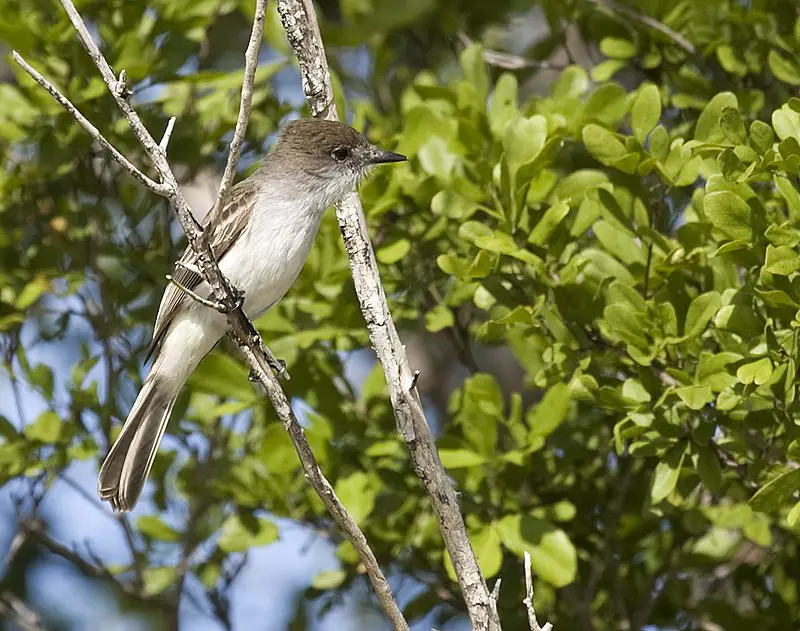
La Sagra’s flycatcher is a beautiful passerine bird that belongs to the tyrant flycatcher family. It can be found in subtropical or tropical moist lowland forests, mangrove forests and other tropical areas of Cuba, Bahamas, Grand Cayman and southern Florida (as an occasional vagrant).
This species has greyish-brown upperparts with yellowish rump; its wings are dark brown while underparts have buffy wash on throat and breast.
La Sagra’s flycatchers feed mainly on insects but they also eat some fruits sometimes. They often perch atop tall trees before making sallies into midair after catching prey in their bills.
These birds nest in large colonies where they build cup-shaped nests from twigs above ground level near water bodies like streams or rivers.
La Sagras’s Flycatchers are active during day time when they search for food both alone as well as in groups allowing them to easily spot predators which may threaten their young ones nesting nearby.Scientific classification:
| Kingdom | Animalia |
| Phylum | Chordata |
| Class | Aves |
| Order | Passeriformes |
| Family | Tyrannidae |
| Genus | Myiarchus |
| Species | M. sagrae |
40. Piping Plover
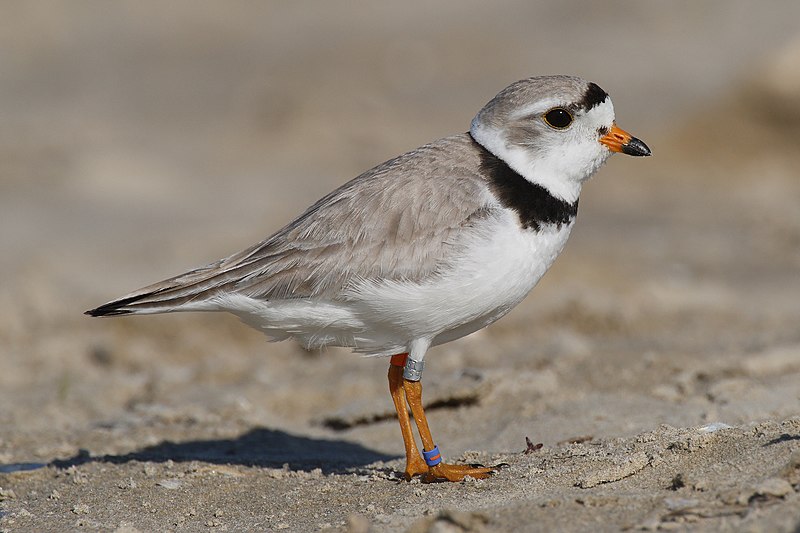
The Piping Plover is a small shorebird that can be found along sandy or gravel beaches in North America.
It has yellow-orange-red legs and its distinctive features include a black band across the forehead from eye to eye, as well as a thicker chest band for males during breeding season.
They are threatened by human activity on their habitats such as increasing development of coastal areas, destruction of their nesting sites due to recreation activities like beach driving and off-leash dogs.
Conservation efforts aim at protecting these birds through habitat protection measures including fencing off areas where they nest and restricting access during breeding seasons.
The future looks brighter with conservation initiatives by local governments slowly bringing the population up again over time.Scientific classification:
| Kingdom | Animalia |
| Phylum | Chordata |
| Class | Aves |
| Order | Charadriiformes |
| Family | Charadriidae |
| Genus | Charadrius |
| Species | C. melodus |
41. Brace’s Emerald
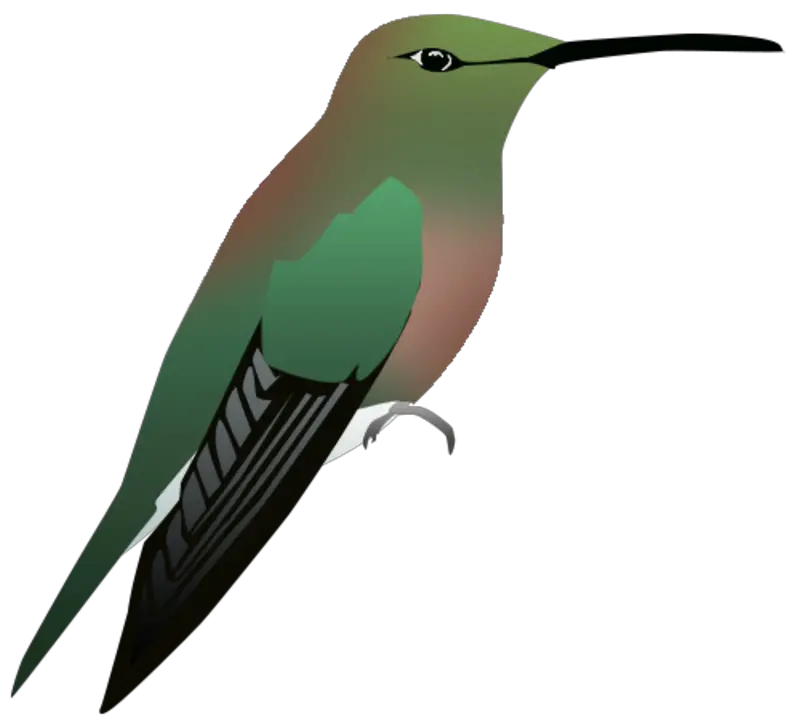
Brace’s emerald was a beautiful and unique species of hummingbird that inhabited New Providence, the main island of the Bahamas.
It measured 9.5 cm in size with 11.4 cm wingspan and 2.7cm long tail, equipped with a curved black bill for feeding on its favourite nectar sources such as flowers or sugar water feeders found in gardens or parks near homes around their range.
Its back had bronze green hue while head exhibited similar colouring but with golden gleam which made it stand out from other birds during flight time or when perched atop trees to sing its sweet melodies to attract mates during breeding season before they went extinct due to human activity changes within environment like destruction of habitats by logging activities as well as introduction of predators into area where Brace’s Emerald resided at one point in history making them unable to survive any longer.Scientific classification:
| Kingdom | Animalia |
| Phylum | Chordata |
| Class | Aves |
| Order | Apodiformes |
| Family | Trochilidae |
| Genus | Riccordia |
| Species | †R. bracei |
42. Loggerhead Kingbird
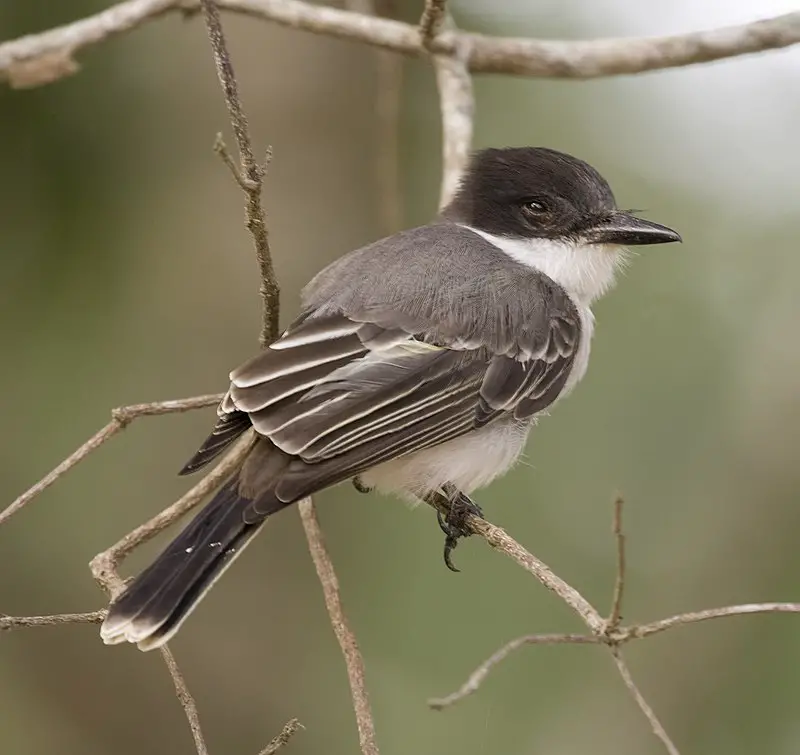
The Loggerhead Kingbird is a beautiful species of bird found in the West Indies, Bahamas, Cayman Islands, Cuba and Hispaniola. It prefers to inhabit subtropical or tropical moist lowland forests as well as montane forest habitats.
The kingbird has striking plumage with greyish-blue upperparts and bright yellow underparts. Its long tail feathers are darkly tipped which helps it stand out from other birds in its range.
This species feeds on insects such as beetles, grasshoppers and dragonflies that can be caught mid-air during its aerial forays.
Nesting season begins between February to May where they typically build their nests near riverside trees or shrubs and lay two eggs at once before incubating them for about 13 days till hatching occurs.
Although not yet threatened by extinction this shy creature should still be appreciated by all nature lovers who get lucky enough to observe one.Scientific classification:
| Kingdom | Animalia |
| Phylum | Chordata |
| Class | Aves |
| Order | Passeriformes |
| Family | Tyrannidae |
| Genus | Tyrannus |
| Species | T. caudifasciatus |
43. Audubon’s Shearwater
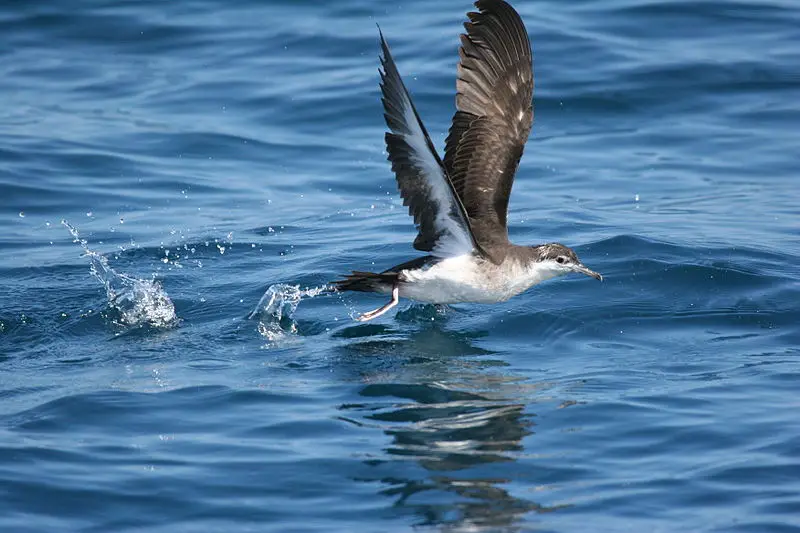
Audubon’s shearwater is a type of seabird belonging to the petrel family. It has many different monikers, including Baillon’s shearwater, tropical shearwater, Bannerman’s shearwater, Mascarene shearwater and Persian Sheawater.
This species was first discovered by French naturalist F�lix Louis L’Herminier in 1836 and earned its scientific name (Puffinus lherminieri) in his honour.
These birds are found throughout tropical oceans across the world from Africa to Asia and even Hawaii.
They have dark brown back feathers with white bellies which help them blend into their environment for protection against predators.
Audubon�s Sheerwaters feed on small fish near ocean surfaces or dive deep underwater when necessary due to their strong wings allowing them excellent swimming capabilities through powerful winds at sea level as well as incredible endurance during long distance flights over vast areas of open water around islands or coastlines.Scientific classification:
| Kingdom | Animalia |
| Phylum | Chordata |
| Class | Aves |
| Order | Procellariiformes |
| Family | Procellariidae |
| Genus | Puffinus |
| Species | P. lherminieri |
Also Featured In: Caribbean Birds,
44. Pearly-Eyed Thrasher
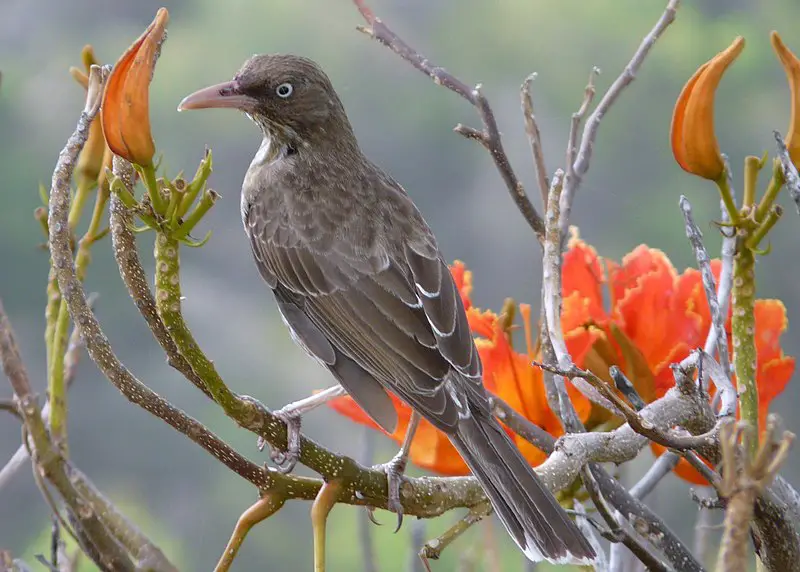
The Pearly-eyed Thrush is a unique and beautiful bird native to the Caribbean islands. It has stunning pearly eyes, with white patches on its wings and tail.
This thrasher measures up to 28-30 cm in length, making it the largest species of Mimidae family found in this area.
With an isolated subspecies living on Bonaire island, these birds have adapted well to their environment over time.
They feed mainly on insects found around them, but will also eat fruits or berries when available for extra nourishment.
These birds are often seen singing together as part of group displays at dawn or dusk – one more reason why they are so special.Scientific classification:
| Kingdom | Animalia |
| Phylum | Chordata |
| Class | Aves |
| Order | Passeriformes |
| Family | Mimidae |
| Genus | Margarops P.L. Sclater, 1859 |
| Species | M. fuscatus |
Also Featured In: Winged Marvels of St Martin’s: A Bird Enthusiast’s Delight, Native Birds Of Guadeloupe Island
45. Forster’s Tern
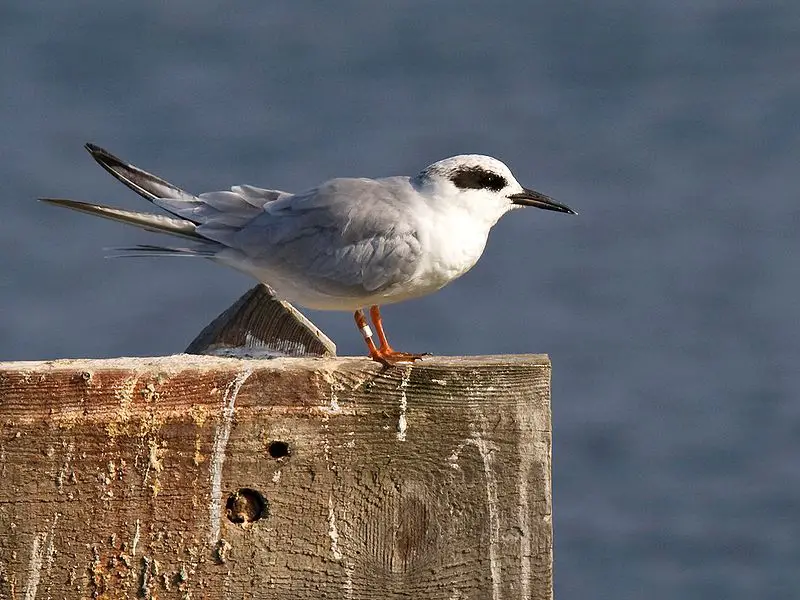
Forster’s tern is a bird of the family Laridae, named after naturalist Johann Reinhold Forster. It mainly breeds in North America and winters south to Central America, though it can also be found rarely but annually in western Europe.
This species has even been documented wintering as far north as Ireland and Great Britain.
The genus name Sterna comes from Old English “stearn”, meaning “tern”.
These birds generally have grey upperparts with white underparts and black heads with a small crest at its forehead that gives it an elegant look when flying around looking for food by diving into the water.Scientific classification:
| Kingdom | Animalia |
| Phylum | Chordata |
| Class | Aves |
| Order | Charadriiformes |
| Family | Laridae |
| Genus | Sterna |
| Species | S. forsteri |
Also Featured In: Birds That Live In Union Island, Most Common Birds of Caladesi Island
46. Black-Whiskered Vireo
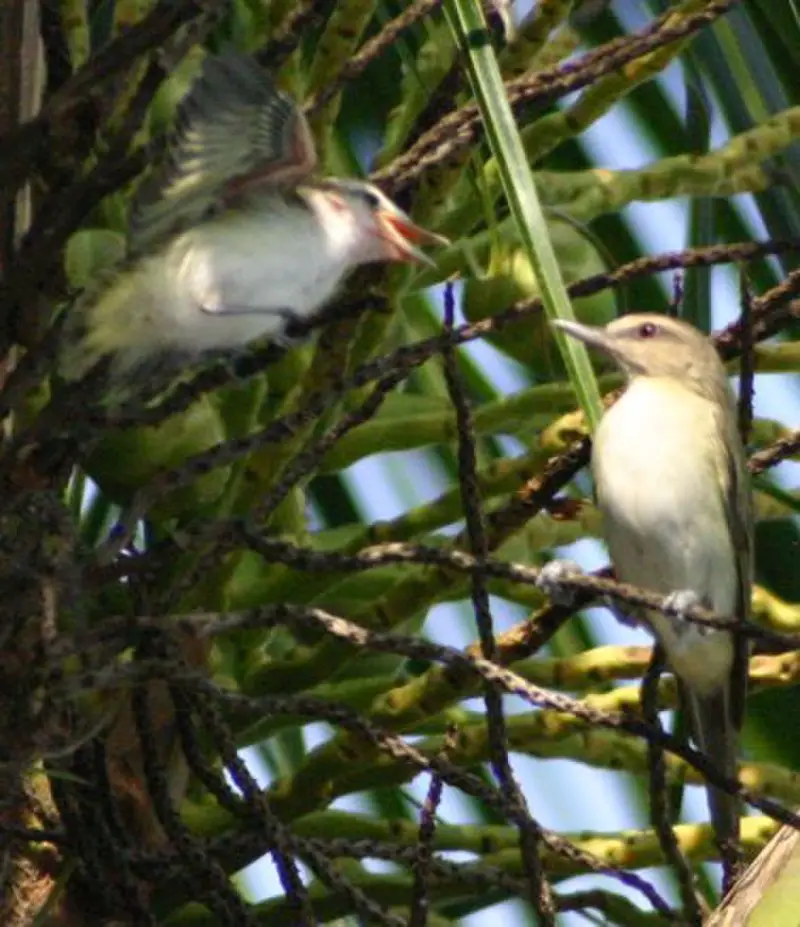
The black-whiskered vireo is a small passerine bird, found in the southern United States, West Indies and northern South America.
It breeds mainly in open deciduous wooded areas but has been known to be an occasional vagrant to Costa Rica.
This species migrates partially north during its winter season from Greater Antilles up towards northern parts of South America.
The male can easily be identified by his distinctive black whiskers on either side of its face while females are generally duller with white streaks along their wings and back.
They make nests at mid tree levels usually out of twigs, grasses or strips of bark which they line with finer materials like feathers or fur for insulation purposes.
All in all these birds are delightful additions to any habitat where they inhabit.Scientific classification:
| Kingdom | Animalia |
| Phylum | Chordata |
| Class | Aves |
| Order | Passeriformes |
| Family | Vireonidae |
| Genus | Vireo |
| Species | V. altiloquus |
47. Caribbean Dove
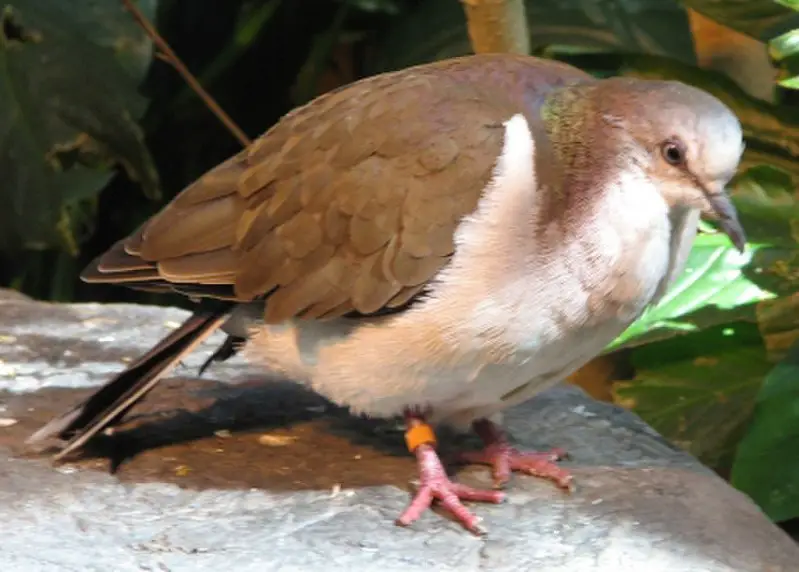
The Caribbean Dove is a species of bird found in many areas across the world, including Belize, Colombia and Honduras. They are noted for their white bellies and grey backs with black spots on them.
These birds typically live in lowland forests, although they have been seen inhabiting more open areas such as pastures or gardens.
This dove has an interesting history; it was first described by several naturalists back in the 18th century under its colloquial name “white-bellied dove.” In recent years this species has even been introduced to The Bahamas.
While not threatened at present due to its wide range and adaptability, conservation efforts should be taken to ensure that these beautiful birds remain part of our environment for generations to come.Scientific classification:
| Kingdom | Animalia |
| Phylum | Chordata |
| Class | Aves |
| Order | Columbiformes |
| Family | Columbidae |
| Genus | Leptotila |
| Species | L. jamaicensis |
48. Cuban Crow
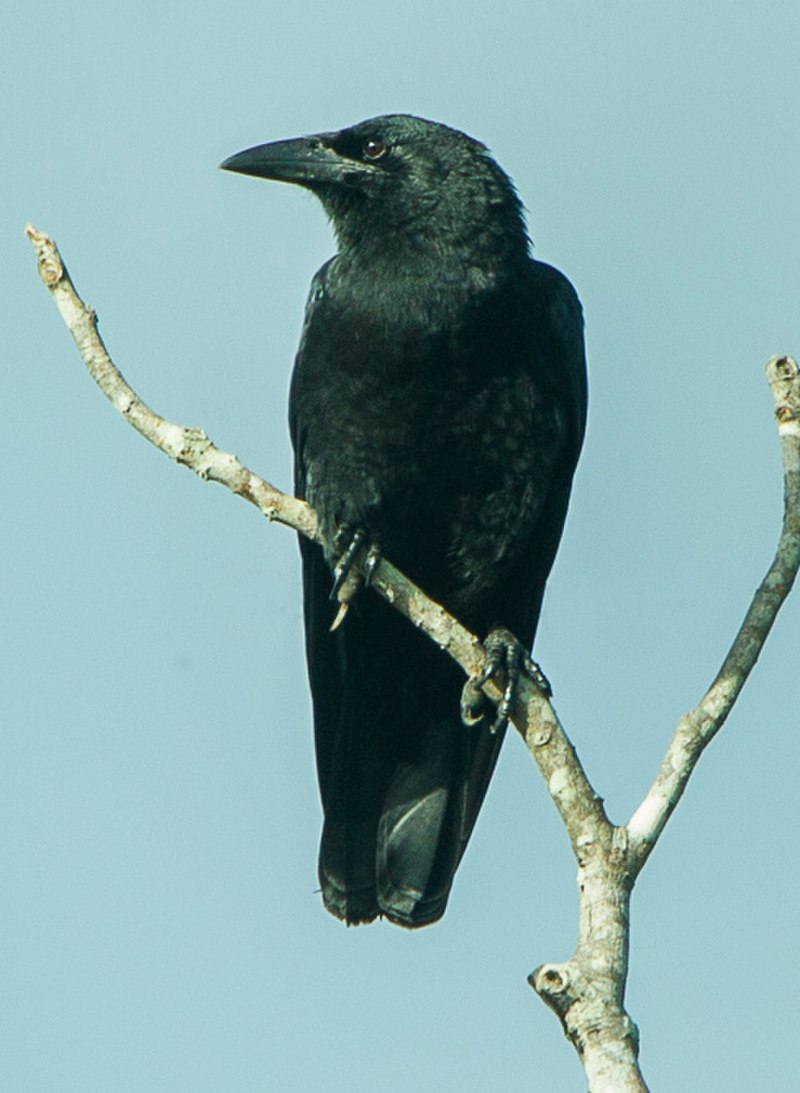
The Cuban crow is a beautiful and unique species of bird native to the Caribbean. It has black plumage, with white feathers on its neck, giving it an elegant look.
Its bill is hooked and tapered at the tip, while its legs are stout and grey in color. The Cuban crow feeds mainly on fruits from trees but will also feed on insects or carrion if necessary.
It often congregates in large flocks when searching for food sources, making them easy to spot among other birds of prey.
They have adapted well to human disturbance due their ability to quickly adapt behaviorally; this makes them tolerant of people near nesting sites as long as they remain undisturbed by noise or activity nearby.
Despite threats posed by habitat destruction caused by hurricanes and deforestation, these intelligent crows continue to thrive throughout Cuba’s countryside areas today.Scientific classification:
| Kingdom | Animalia |
| Phylum | Chordata |
| Class | Aves |
| Order | Passeriformes |
| Family | Corvidae |
| Genus | Corvus |
| Species | C. nasicus |
49. Scaly-Naped Pigeon
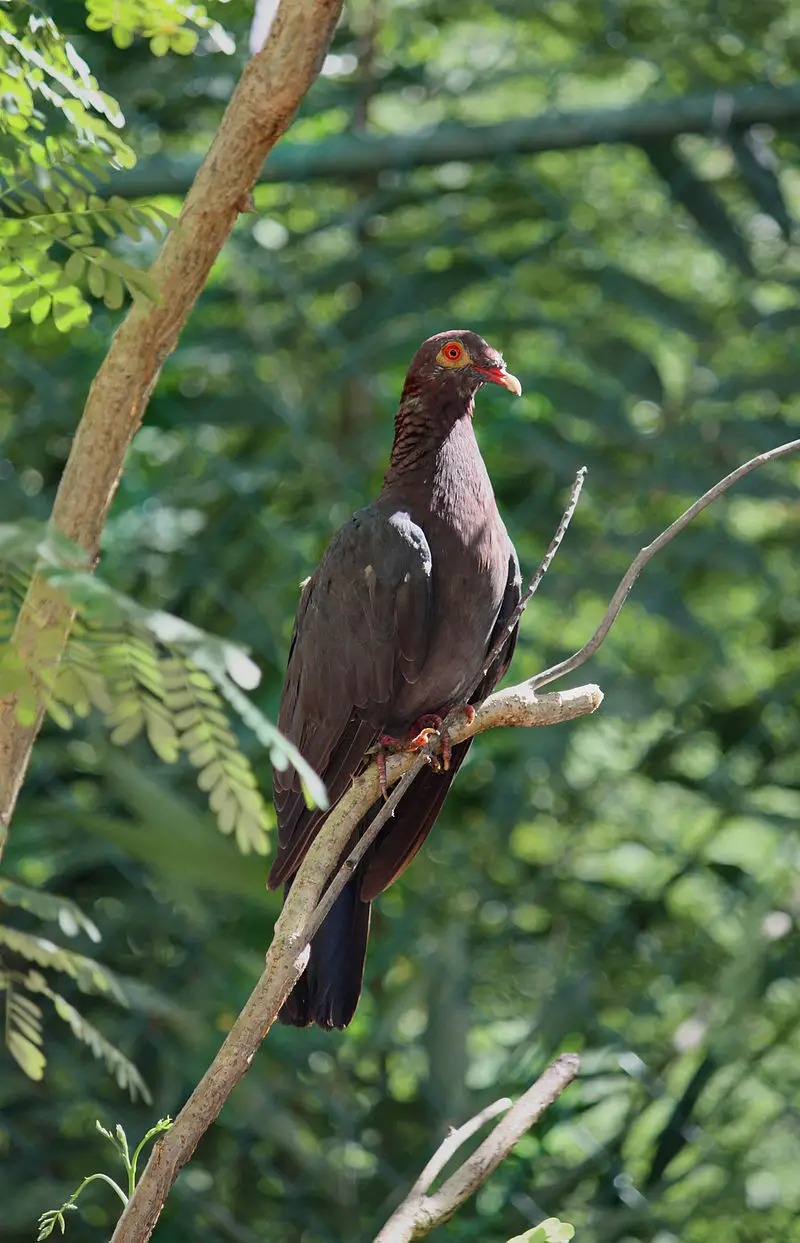
The scaly-naped pigeon is a large bird belonging to the family Columbidae. It has slate grey plumage with maroon coloured feathers around its neck, giving it the common name of red-necked pigeon.
The species originates from throughout the Caribbean and can reach 14–16 inches in length.
Its scientific name is derived from its unique feature: small scales on its nape which form an attractive pattern when viewed up close.
This makes them easily distinguishable from other birds within their range as they are one of few that have this characteristic.
They feed mainly on fruit but also consume seeds, insects and even carrion depending on availability at any given time of year or location.Scientific classification:
| Kingdom | Animalia |
| Phylum | Chordata |
| Class | Aves |
| Order | Columbiformes |
| Family | Columbidae |
| Genus | Patagioenas |
| Species | P. squamosa |
Also Featured In: Native Birds Of Middle Caicos, Common Birds of St. Vincent Island
50. Giant Kingbird
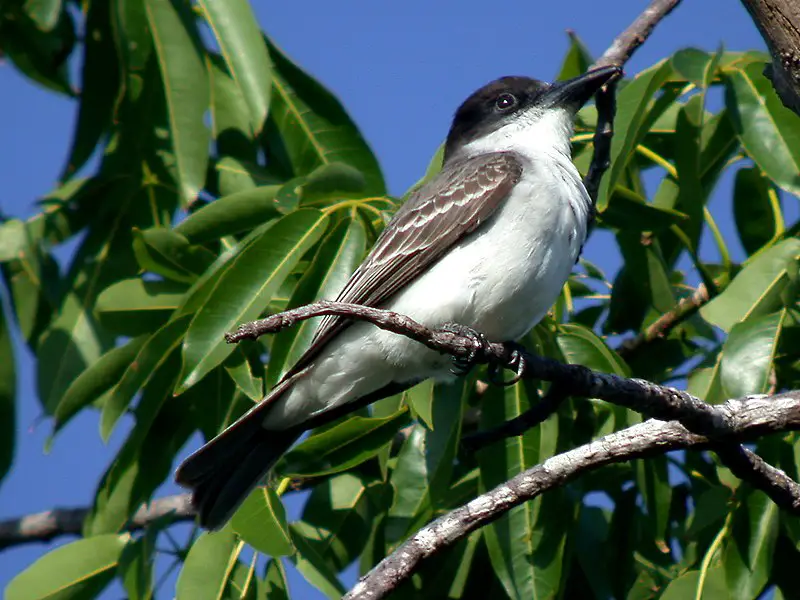
The Giant Kingbird (Tyrannus cubensis) is an impressive bird, endemic to Cuba. It belongs to the tyrant flycatcher family and is mainly related to the Loggerhead kingbird found in several Caribbean islands.
This species can reach up to 23 cm long, but recent studies have shown that this might be overly conservative estimate.
The Giant kingbirds are particularly noted for their feisty nature – they will often chase or even attack larger birds if provoked.
They also possess a distinctive call consisting of ‘kip-kirrr’ notes which gives them away easily in Cuban forests.
As such, these beautiful creatures need our protection so that future generations may continue appreciating them for years to come.Scientific classification:
| Kingdom | Animalia |
| Phylum | Chordata |
| Class | Aves |
| Order | Passeriformes |
| Family | Tyrannidae |
| Genus | Tyrannus |
| Species | T. cubensis |